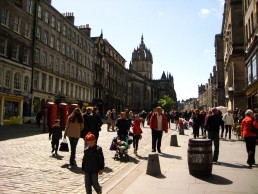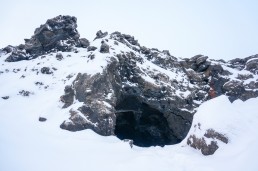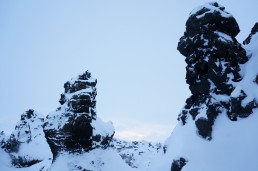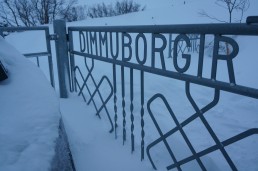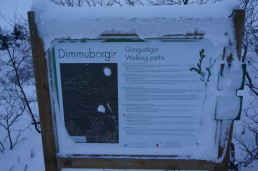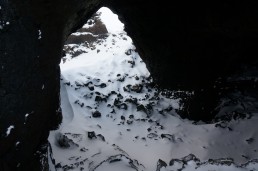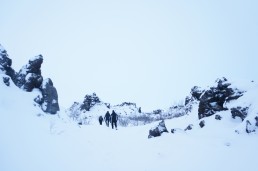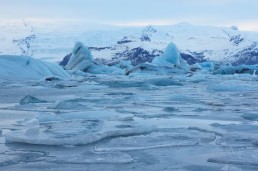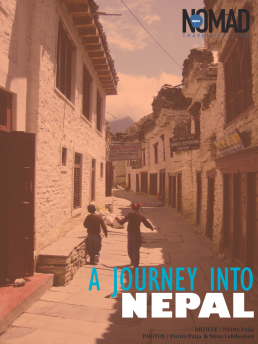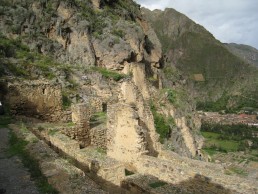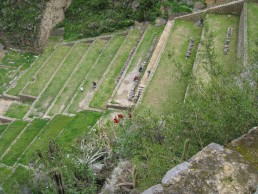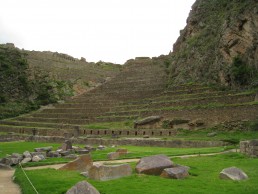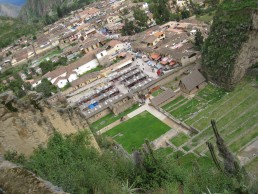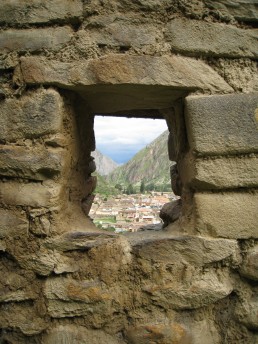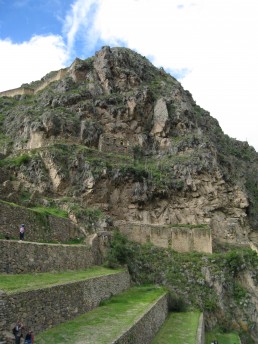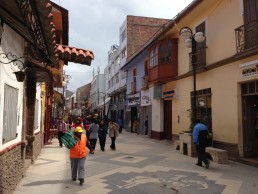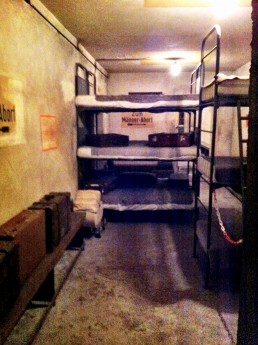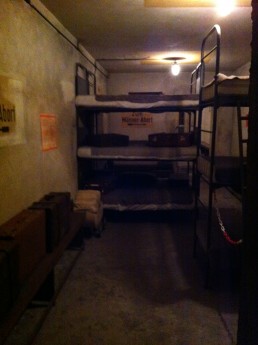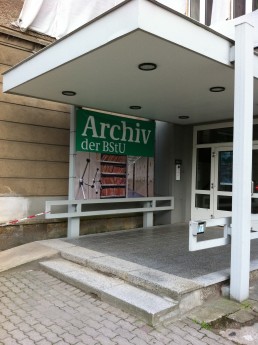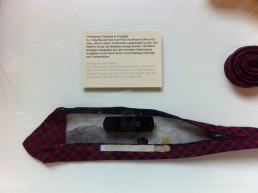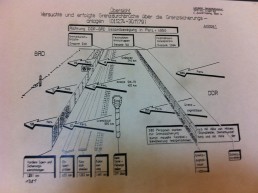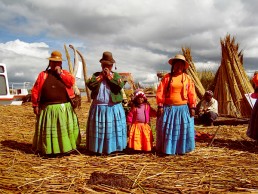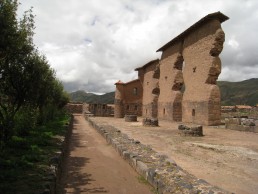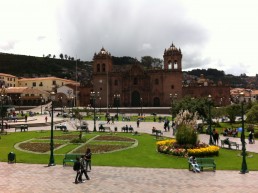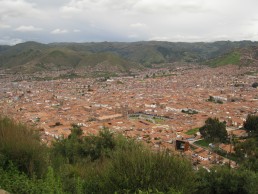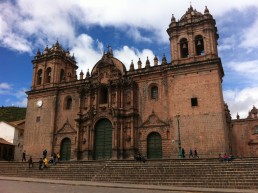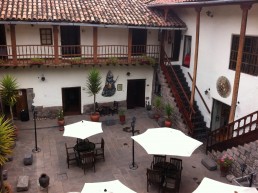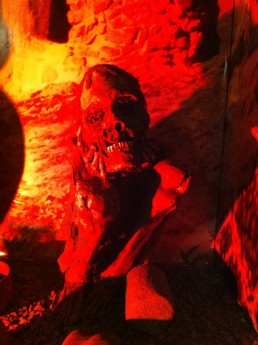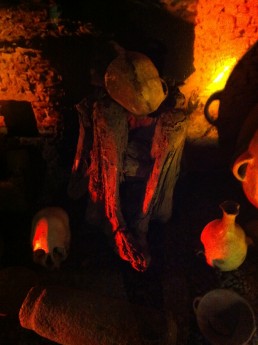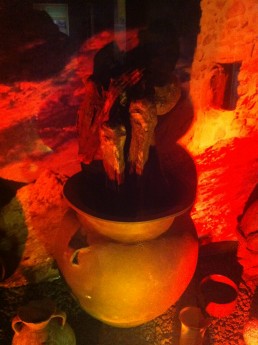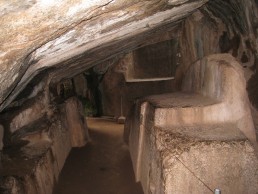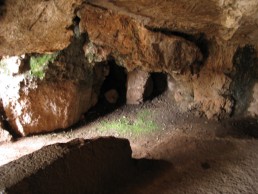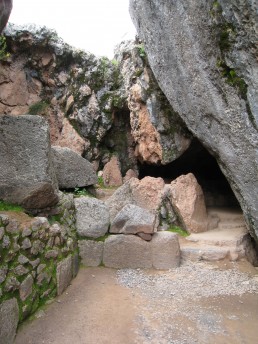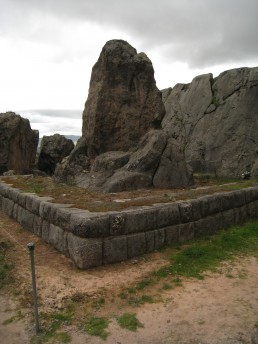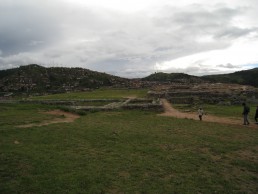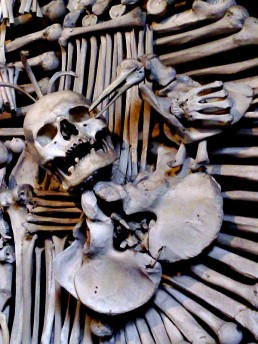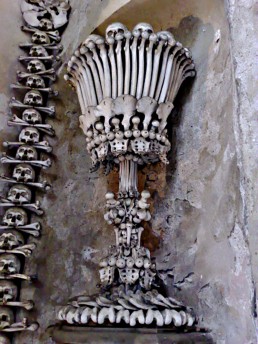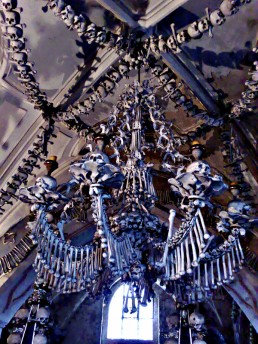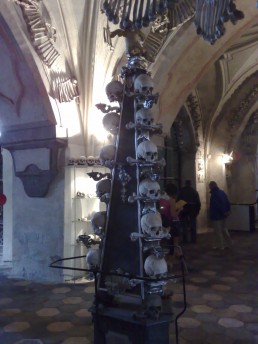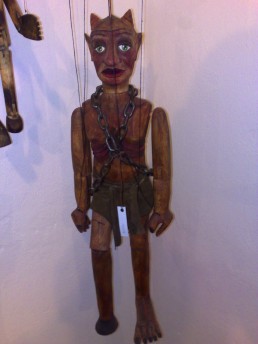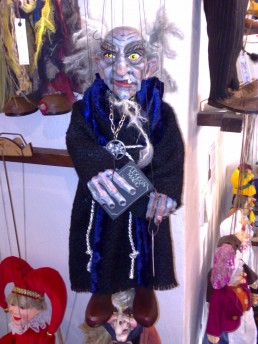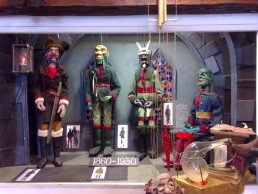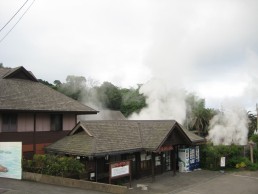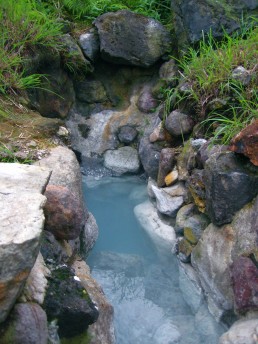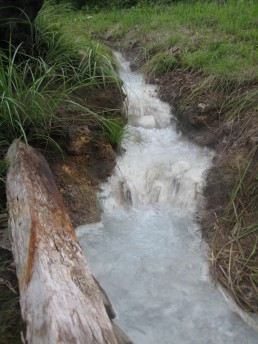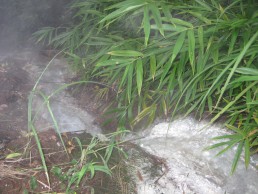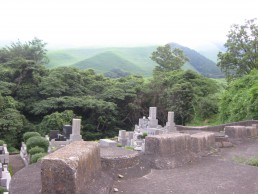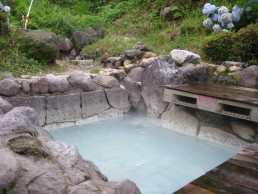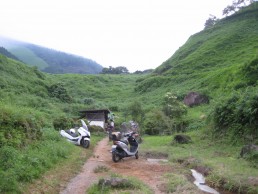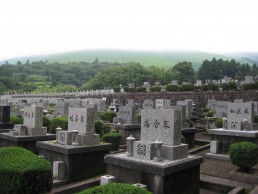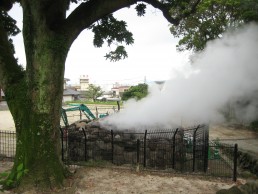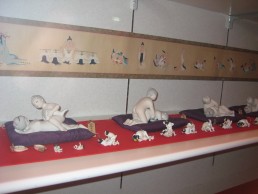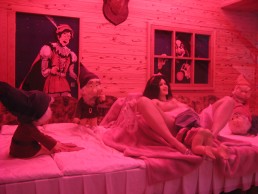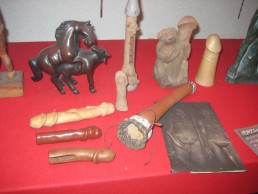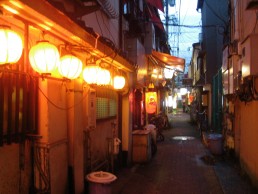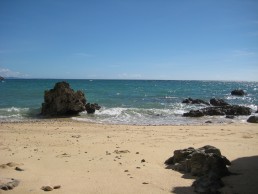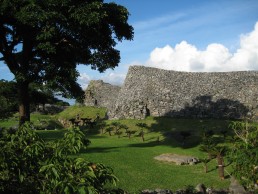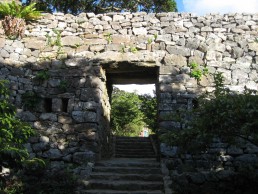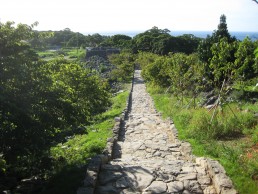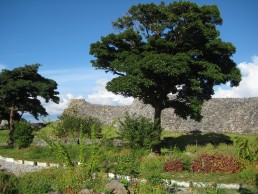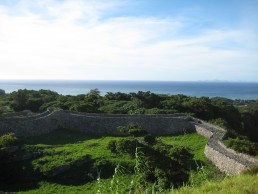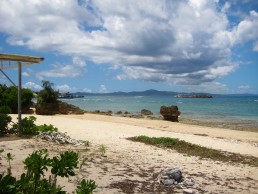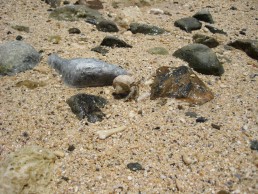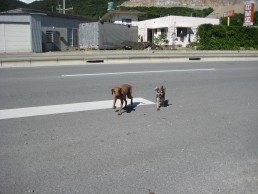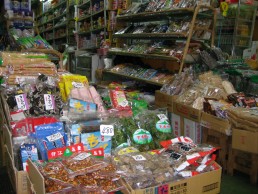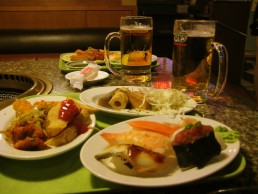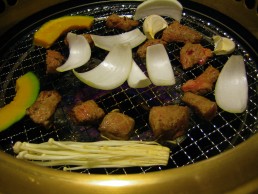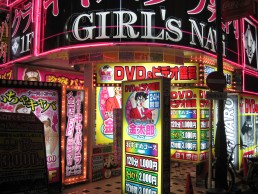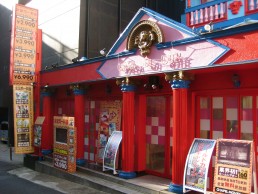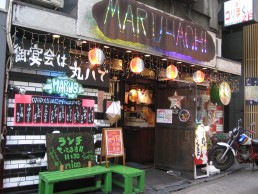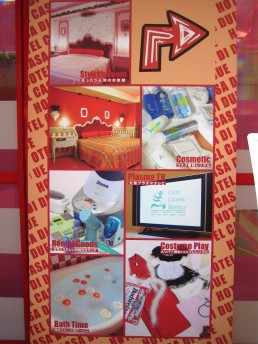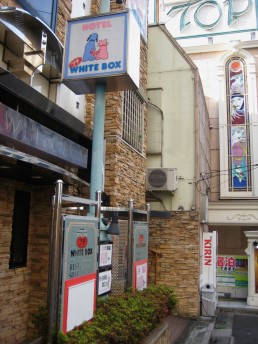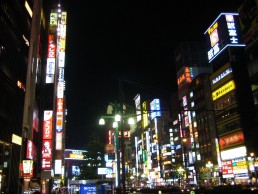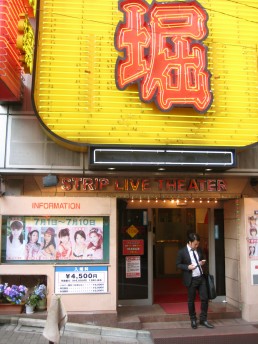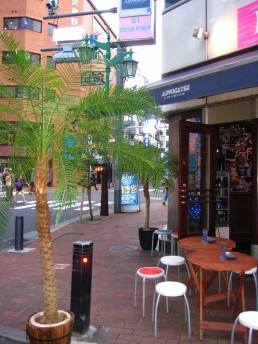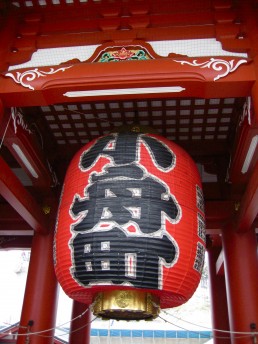On a Ghost Tour in Edinburgh (Updated 2024)
Ever wanted to join a ghost tour in Edinburgh? This iconic Scottish town offers almost every traveler a wide variety of attractions. It has an intriguing history, but the most exciting part is the ghostly past of this old city. We took part in one of the many ghost tours in Edinburgh.
Choosing a Tour Organizer for Your Edinburgh Ghost Tour
There are many operators for ghost tours in Edinburgh, but not all of them have access to the best haunted places. You can check some reviews of the best Edinburgh ghost tours here.
We had booked the “all in one package” -ghost tour from the City Of The Dead -tours, including the famous South Bridge Vaults and the Greyfriars’ Graveyard with the Covenanters’ Prison. These are known as some of the most haunted places in Edinburgh and probably worldwide.
This is why there is a fair chance to see or feel some paranormal activity during the tour. Our particular tour was called The Double Dead Tour.
This ghost tour operator is one of the best, as they hold the sole access to two of the world’s most haunted locations—Damnation Alley in Edinburgh’s legendary ‘Underground City’ and the Covenanter’s Prison in Greyfriars Graveyard. You can also book your Edinburgh ghost tour here.
Most tours go underground, so you cannot take many photographs without excellent flash gear. However, we’d suggest concentrating on the stories rather than taking photos. The stories are the core of these tours, after all.
Listening to the tour guide’s engaging stories is the thrill that’ll set you in just the right mood for the grim places you’ll visit. Luckily, we had one of the best guides, I think. At least she had excellent storytelling abilities, including some nice acting skills that added to the experience!
In the Haunted South Bridge Vaults in Edinburgh
First, you will descend underground to the South Bridge Vaults.
Some of the less fortunate residents once lived here, and it’s an essential part of the Haunted History of Edinburgh. These included criminals, thieves, murderers, you name it—all those who didn’t have a place in society above ground. Life was harder and more cruel than you could ever imagine in the South Bridge Vaults.
Also, if you were permanently sick, you often found yourself living here, underground, with the rest of the people, which the upper-class citizens didn’t want to see. Because of the type of its residents, a vast number of people also died in the South Bridge Vaults, and the majority of them did not die for natural reasons. Most of them were killed in one way or the other. Under the ground, it was a society of its own. There, you either survived or died.
Therefore, it’s not surprising that these Vaults are said to be so haunted. Many unfortunate souls ended their lives here, so it’s not a big surprise either that many of those souls may have left here. We felt lots of residual haunting here.
Walking in those grim vaults, you can feel that ”something” is there. It’s a feeling that you cannot quite explain to another person. It’s like that feeling when you’re alone in a room, your back facing the open door, and suddenly someone walks in. You don’t see them immediately, but you feel their presence.
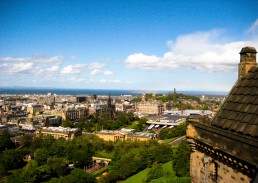
In the South Bridge Vaults, there’s one place that is said to be exceptionally haunted, in particular by a little girl in a white dress.
On our Edinburgh ghost tour, we spent many minutes standing in one spot in the Vaults with all of our flashlights off and in complete silence. Our guide tried to summon the girl to come and show herself to us. Such silence in a big crowd creates a particular kind of atmosphere (referring maybe to how a group panic is created). If someone scares something, everyone else scares, too—except me.
I wish I could see a white figure somewhere, but I didn’t. I guess the ghosts don’t appear when asked like that.
However, the general atmosphere everywhere in the Vaults was suppressing. The darkness, the strong smell of mold, the lack of oxygen there underground – it all adds up to an interesting experience.
Concentrate on listening to the stories, and you’ll have a great adventure. Try also to have an open mind, and maybe somewhere in the shadows, you’ll see something that others won’t. This place has such a wide history that you could write extensively about it, but if you want, you can read more from here.
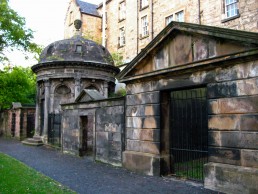
The MacKenzie Poltergeist – One of the World’s Most Famous and Frightening Ghosts
I wish we could have toured more of the South Bridge Vaults, but since we had another place to go, we continued our way to the equally—if not even more—famous Greyfriars’ Graveyard.
Covenanters’ Prison is located in one of the most paranormally active areas in the world. And we could also somehow feel it, deep inside our bones, when we stepped inside its perimeter. Something gradually shifted in the atmosphere around us.
In Greyfriars’ Graveyard, there is also the home of one of the most active and well-known poltergeist spirits – the MacKenzie Poltergeist.
This poltergeist has caused physical harm to people who have visited the Mausoleum grave. There have been scratches, bite- and slapping marks on peoples’ bodies, to name a few injuries. These are things that those people just weren’t able to do for themselves by their own hands.
On the web pages of the City Of The Dead –tours, there’s even a warning that this spirit (or whatever it is) can cause actual physical harm, so you’ll go at your own risk. There are also pictures of the damages that it presumably has done. Even if you are a hard skeptic, these ones will arouse your imagination, won’t they?
Many paranormal researchers have been conducting intensive investigations here, and they’ve also found many haunting results. If you’d like to study them more, it’s pretty easy to find some of them on the web.
The Black Mausoleum of MacKenzie is a really eerie-looking building by itself. It feels like it’s surrounded by a repulsive energy, at least. It is a place that you don’t want to approach.
The poltergeist is believed to be the evil spirit of a 17th-century Scottish advocate, George MacKenzie. He gained a very nasty reputation during his lifetime and earned the nickname ”Bloody MacKenzie.” He gained this grim nickname for locking up the 1200 Covenanters in a field near the Kirkfriar’s Graveyard. Many of them were later executed, and hundreds died of hunger.
The mausoleum of the MacKenzie poltergeist was maybe the scariest place I’ve ever been, and I wouldn’t want to go there again. However, it was a highlight of our ghost tour in Edinburgh.
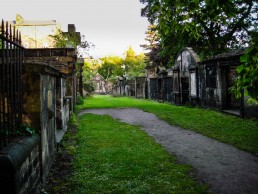
Where the hauntings began and what is believed to have wakened the MacKenzie Poltergeist was a homeless man who, in December 1998, broke into the mausoleum when looking for shelter from the rain. The story goes that he broke into a chamber of coffins and began to try to open them (searching for something valuable to steal). While doing this, he fell through the floor into a third, previously unknown chamber full of corpses that had died centuries ago of plague.
The mysterious and disturbing activity is reported to have begun almost immediately after this interference with the mausoleum’s contents. The homeless man couldn’t have chosen a worse place to break into. It’s believed that he unleashed something very evil and genuine, witnessed nowadays by hundreds of people who have had unpleasant visits to the mausoleum and its surroundings.
Of course, it’s always your personal matter whether you believe in ghosts. I think there has to be more than meets the eye. Even though I am a pretty objective person, there are still some things that cannot always be explained rationally or by pure science alone.
Don’t Miss a Ghost Tour in Edinburg
When you visit these beautiful Scottish sceneries, don’t miss a ghost tour in Edinburgh. It’s an intriguing experience, and you will learn a lot about the city’s colorful history.
I didn’t get hurt or see anything that special when visiting these two very haunted sights of Edinburgh, and maybe it was better this way.
But I did experience very strange feelings throughout the whole tour. There is something over there; I can tell you that. To decide what it is—or is it nothing at all—you have to go and visit there by yourself.
The world is full of haunted places (or at least that is what the stories tell). One such place is the Forbidden City in Beijing, China.
Whatever you choose to do, stay safe. If you experience something strange, please tell me about it. I’d also love to hear about your experiences on a ghost tour in Edinburgh!
Helping to Protect the Central American Snakes in Cahuita
Did you know that while traveling, you could also help out scientists in various ways? If you haven’t heard about an organisation called Adventurers and Scientists for Conservation (ASC), it’s about time you do. I did some co-operation with them during my visit to Costa Rica in March 2014.
I recently participated in a project which is gathering data of Central American snakes to protect these creatures as well as raising awareness of the local people about these slithery friends. This project has currently been expanded for collecting data from all over South America, not just from Panama, even though it says so on the site. Taking part in this project was exciting.
The Gear Needed on the Field
Different projects require a different kind of gear, but there is some basic equipment that you should have. Those are a good GPS system to locate your exact coordinates, a waterproof notebook and a pencil to write down your discoveries and some reliable (preferably also waterproof) clothes and sturdy shoes. Every project has its special needs, so consult your project files (which you’ll get from ASC) what additional, specific items are required.
Searching for Subjects in Cahuita
Even though Costa Rica has extremely broad biodiversity, it isn’t easy to find the animals. There are so much of them hiding in the vast vegetation that you need a trained and keen eye to spot them while walking in the rainforests. It will take you some days to get some practice in spotting them among the trees and various plants, and a good guide can help you out on your first days. But be patient and after a little while, you’ll start spotting them by yourself. When that happens, it’s very rewarding.
We spent many days in Cahuita, which is one of the more remote national parks of Costa Rica. It’s not visited by as many tourists as the many other parks, and this is one of the reasons why we chose to visit here. The few people, the more opportunities to see wildlife and to explore around in peace. We had already visited the park one time before spotting anything more than little lizards or the occasional monkeys. When we started to see also sloths hanging on the tree branches several meters above ground level, among other wildlife, we were excited. But the snakes still stayed hidden from my cameras’ lens.
When out exploring new sites you have to keep in mind that perhaps you’re not going to get any data for the project you’re currently participating, but don’t let that ruin your day. The people back at ASC are very understanding about that sometimes you’re just unable to collect data. You just have to go by the terms of the current circumstances in every situation and location. A photographing project is easy to participate because most of the times you probably have some camera with you. So when an opportunity comes up, you can quickly take advantage of it and snap the pictures.
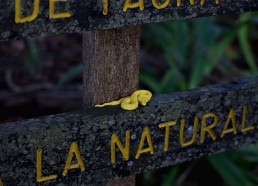
Finding the Snakes in Cahuita National Park
Finally on our second day hiking around in the National Park of Cahuita we encountered a snake. Though it was very close that we would have missed it. The snake was tiny, and it was sitting on a signpost not very far away from the entrance. We noticed it because it was bright yellow in color. When getting closer to my subject to get some good shots I thought about the instructions given in the information sheet of this project, of how to safely photograph the snakes.
Taking good care to obey them I got many good shots of this little, yellow and slithery fellow. I wrote carefully down the required information about the GPS coordinates, surroundings and weather conditions of the spotting site. While doing it, I felt very excited to encounter a snake finally in the rainforest and about the fact that I’d finally have something to send back to ASC to literally help out this science project! I would have loved to be able to catch more individuals but this time, they stayed hidden. Every little piece of information is better than nothing.
If this project is still going on in July when we’re heading for a month to the neighbouring country, Nicaragua, I will continue photographing snakes and gathering data for this project. Protecting the nature is a collective interest for us all. And always remember, that in preserving our beautiful globe there is no act too minor worth doing. I understood this when we were visiting the Cahuita National Park. All help counts!
Driving the Ring Road of Iceland in Winter - East and North
Join us when we continued our winter Ring Road of Iceland adventure tour. On the road, we encountered snowstorms, stunning sceneries, and took some time to relax in the nature baths.
Rapidly Changing Weather Conditions
We have continued our Iceland tour in changing weather conditions and drove all the way to Seydisfjördur from Hali. The weather varied a lot from blowing snow to an almost clear road. We left from Hali at about ten in the morning and our total driving time, including three stops on the way, was five minutes to eight hours!
The last stretch from Egilsstadir to the port town of Seydisfjördur was a little road with loads of snow on it, and it was also continuously snowing more from the sky. Just a day before this road had also been marked with red in Vegagerdin (which means impassable, practically closed). But luckily today it was drivable. Even though there were harsh winds, snow, and darkness. We were lucky again, I guess.
Our place in Seydisfjördur was a little cabin constructed of logs at the other side of the fjord. We settled around with all our stuff, grabbed a couple of beers and took a bath in the lovely hot tub located in the backyard of the cabin. We were the only guests in this cabin village, which wasn’t a surprise. Since we’ve arrived in many of our hotels when it’s already dark, we haven’t seen the surroundings properly until the next morning. This day wasn’t an exception.
When the morning rose, it revealed a lovely scene to the fjord around us with the surrounding mountains. During breakfast, we did our morning routine: checking the road conditions ahead of us from Vegagerdin. This site is worth more than gold there, especially in the wintertime. We have a tight schedule on this trip and because of that, we have these many one night stops on the way. From this stop in Seydisfjördur, our route took us next to Myvatn. Luckily this days’ drive was going to be quite a short one compared to the yesterdays’.
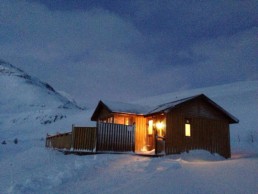
Driving in the North and Relaxing in the Myvatn Nature Baths
The road to Myvatn is one of the most scenic parts of Northern Iceland, and we had planned to visit all the interesting sites on the way. The first of them was supposed to be Krafla, a volcanic crater located at the end of a side road from the Highway 1. We had found the way, and we had driven about 5 km when the cleared length of the road just stopped dead.
From that point onwards ahead of us there were just loads of snow. We saw that no one had driven the road since the snow had fallen. We did have a 4RW car, but it wasn’t a super jeep, so we chose not to take the risk to get stuck somewhere up the snowy road. We were just half way of the whole length of the road, and no one knew how the road would be like further away. So we decided to turn back to the main road and continue towards one of our highlights in this region – the Myvatn Nature Baths!
Myvatn is one of the best of the Iceland Geothermal Baths! Remember, when driving in Iceland in winter, you have to accept that every place may not be accessible in those current conditions. If that happens, you just have to skip it and continue your way. But fortunately, there are so many great places that if you miss something out, you’ll have something in replace for sure! So don’t let that ruin your day.
We arrived at the nature baths in the afternoon and were very excited to have the chance to swim in the hot nature pools of Myvatn, full of nurturing minerals. Fortunately, we also were one of the few people around at that particular time. It’s always a pleasure when you don’t have to share your experience with hundreds of other people at the same time.
The Myvatn nature baths reminded me of the onsens of Beppu in Japan. There was the same smell of sulfur in the air, the same color of the water. Even the same thing happened to my silver ring which I forgot to remove from my finger – it turned all dark from the power of the waters’ minerals.
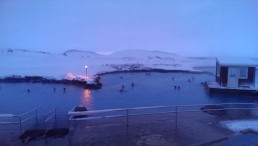
Finding a Great Guesthouse at Very Short Notice
We spent few great hours at the nature baths and then continued towards our next accommodation, as well as to look for a good dinner. For the dinner, we found a very nice looking place called the Vogafjos. It was a guesthouse, restaurant, and also a working farm near Dimmuborgir, here in Myvatn.
Vogafjos serve many organic products and of course products of their own farm. You can also watch the cows in their cowshed from behind glass in the restaurant. This is maybe a bit bizarre but also a refreshingly different solution for a restaurant. The dinner itself might have been better if it weren’t the Christmas and New Years’ holiday season, even though there wasn’t nothing wrong with it. At this time many of the places in this region are actually closed. When you’re able to find a nice place to eat during the holiday season, you can consider yourself lucky.
After long dinner, we drove to our pre-booked hotel, the Dimmuborgir Guesthouse – which turned out to be a disaster! When arriving, we were told that they wouldn’t serve any breakfast, although we had booked the rooms with one. Then we got three (!) different keys from the reception because one’s door may not have been properly closed and therefore the room could be freezing cold! Hearing this didn’t actually raise our hopes. Instead of showing us the way to the rooms, we were given a map to them. What a service!
When we found the right rooms, we first noticed that at the front of the doors of two of them were at least one meter high piles of snow. This meant that if we had wanted to see the rooms inside, we would have had to dig our way into them! This was surely a thing of what you shouldn’t have to do anywhere. Nor there even were any shovels around. But at this point, we chose to call back to the Vogafjos Guesthouse and ask if they’d have two rooms available and just leave from this disaster called the Dimmuborgir Guesthouse.
Luckily the Vogafjos had vacant rooms for us and even for a lower price than the Dimmuborgir Guesthouse would have cost – including breakfast! It was a good thing that we haven’t paid anything in advance to Dimmuborgir, so we could just drive back to the reception to tell them that we weren’t staying. The two overwhelmingly friendly sheep dogs that greeted us when we arrived were the only good thing in that place.
After this little accommodation disaster we drove back to Vogafjos farm, and we got very lovely, cozy, warm, and new cottages to sleep in. The staff was happy to welcome us back, and we got very professional and friendly customer service! In the morning, after a good nights’ sleep, we enjoyed the best breakfast of our whole Icelandic road trip in their restaurant. So I can warmly recommend staying over there if you ever find yourself in the Myvatn region!
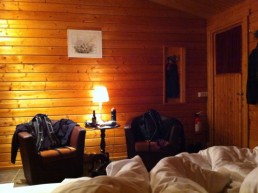
Private Exploring in Dimmuborgir – a Place With a Thrilling Legend
On the next day, we had planned to go visiting the best part of this region – the Dimmuborgir. In this vast area, there are unusually shaped lava fields and volcanic rock formations. There is also a legend about Dimmuborgir that when Lucifer was cast out from Heaven, he landed here and therefore created these “Catacombs of Hell”. What an impressive and exciting place!
During our breakfast, we chatted with the staff about Dimmuborgir, and they told us that there’d be so much snow now that the only possible way to explore it further would be with snowshoes. They would’ve even helped us to rent some if we had wanted to. After some thinking, we nevertheless decided not to rent them. We thought about just going to see the place as much that it’d be possible without snowshoes. But very well, I have to admit that eventually, that wasn’t exactly what happened. I’ll tell you what actually happened.
We drove a couple of kilometers to Dimmuborgir, got our gear together, and started to explore around the area. After a while we got to the point of which the staff had said would be the farthest point you could reach without the snowshoes. But despite that, we just continued further!
What we were thinking then, was to just “explore a bit further” since there weren’t actually so much of snow that you wouldn’t have been able to walk forward. So we slowly walked further and further, fascinated by the peacefulness and beauty of the place. After awhile we noticed that we had already come half way of the longest hiking route of the whole place! So at this point, instead of turning back, we decided to walk the whole way – of course!
Once in a while, there were points in where there was so much untouched snow that it reached to your groins. And then walking was a bit difficult. There were also points where the route marker poles were almost invisible, buried under the snow. But with keen eyes, they could still be seen.
All of a sudden, it had turned into a real adventure in this desolate place. And without much surprise, we were the only people there. Of course, you have to remember that we had good gear with us, and we had more than one GPS system, so there weren’t any actual danger of getting lost. If we hadn’t had the GPS, we wouldn’t have dared to go all the way.
It’s still true that there could have been anything under the snow – holes, gaps, you name it. We carefully followed the route markers and trusted them. It was the only choice to do. It took us about more than 4 hours to complete the whole route, but it definitely was worth every step!
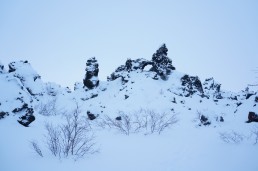
I admit that doing something like this wasn’t such a wise thing to do. If we’d have told the locals about what we did, they would have said that we were just completely crazy. But then again maybe we Finns just are a bit crazy.
But it was so much fun and above all, it was an adventure. And we always crave for adventures! On our hiking adventure, we also saw the “Church,” a cave of a very unusual shape. I think we also saw “the Gate of Hell,” even though we didn’t actually recognize it for sure at the spot. We also got loads of excellent photographs. And we got to experience something very unique in our own pace and in peace.
There are many advantages of having the whole place just for you. One of them was that we got to climb to some locations where it wouldn’t usually be allowed to climb. So we actually got everything you could hope for of that place. I also think that Dimmuborgir wouldn’t be the same if experienced at summer, with crowds of other tourists walking the paths beside you.
So always consider traveling in the odd periods of the year and definitely in the off-season. Then you can perhaps do many unusual things but make sure that you can fully trust in your gear, in your skills, (without overestimating them!) and into your friends. And if it’s winter you have to take some special consideration about your gear. In winter the conditions are going to be twice as hard.
We had warm clothes, GPS equipment(s), lots of time in daylight hours, and above all, we had good shoes! And if we would have wanted to make the hike a bit easier for ourselves, we’d had rented the snowshoes. But because we didn’t, we got at least weeks’ worth of exercise at the same time.
After reaching back to our car from the extreme winter hike, we drove ourselves to Akureyri. It’s the biggest town in Northern Iceland. There we spent the New Year’s Eve and had the second one for our two nights’ rest at an apartment.
Driving the Ring Road of Iceland in Winter - the South
We had an idea of driving around the famous Ring Road of Iceland somewhere in October 2013. Driving this major road in winter is sometimes considered almost impossible. Maybe that’s why we wanted to try to do this Iceland Ring Road tour in only 11 days.
Starting Off With our Epic Iceland Road Trip
We did careful planning for this trip already months beforehand with checking the conditions, as well as choosing and booking the accommodations from possible distances apart. We also tried to take notice of all the possible delays what the ever changing winter weather could bring before us. As you know, in Iceland there can be winter storms, snowfalls, harsh winds, and sandstorms along the way, just to mention few. We also have only 11 days to complete the whole thing – which is not much!
So we will need a bit of luck with us, too. Or maybe a whole lot of luck. As writing this, we have already driven successfully from Reykjavik all the way through the famous Golden Circle, the famous black sand beach in Vik, Eyjafjallajökull volcano and glacier, Vatnajökull glacier, and Skaftafell National Park to have a two nights rest here in Hali.
On the day when we arrived in Reykjavik on the 23rd of December, the Icelandic Road Administrations website showed that the road to Vik and forward was marked in red. The red means “impassable.” There were also yellow circles with red linings which mean “No passage.” Because of this information we were really worried that we wouldn’t be able to even start our winter road trip adventure.
But after we had spent our two nights in Reykjavik and when we had begun off to our journey, the roads had all turned into yellow and green on the website! And those colors mean just “spots of ice” and “easily passable.” In this country, that means that the roads are in good condition. So we were more than happy. This change had also happened just in overnights’ time!
I think that the Icelandic Road Administration takes good care of the highway one (aka the Ring Road). It’s the whole country’s main road after all. So we took off. Just about 15-20 kilometers (a rough estimate) after driving out of Reykjavik, there were already some impressive views in front of our eyes – mountains and a gorgeous sunrise from the middle of nowhere!
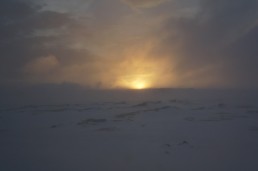
On a Glacier Walk at Svínafellsjökull Glacier Tongue
We have already checked out the sights of the Golden Circle. The best of them was the Gullfoss waterfall, where some of the “The Wall” -scenes from the successful TV-series, Game Of Thrones, have been filmed. That place looked absolutely majestic. The Geysir, on the other hand, was a bit of a disappointment, it being pretty small and not functioning much anymore. Then again, its “little sister”, Strókkur, erupts every 10-15 minutes.
So if you want a picture of a geyser erupting with a statue of steam and water, just wait with your camera ready, and you’ll get it at Strókkur. I’ll later write more about Iceland and all these sights. This is only an “On the Road” -kind of a post. That’s why I’m just writing briefly about some highlights that we have been seeing and doing so far.
Last night we stayed in a country hotel in Lambafell. It was a log-style built house at the root of a mountain. Reminded me little of the hotel seen in Twin Peaks, actually. In the morning we continued our journey from Lambafell to the famous black sand beach of Vik to take some magnificent pictures.
Lambafell was located conveniently via our route over to the Skaftafell National Park Visitors Centre, where we had booked a glacier walk at the Svínafellsjökull glacier. It’s an outlet glacier of the massive and most famous glacier in Iceland, the mighty Vatnajökull. We had booked our tour with Mountainguides tour company.
This glacier walk was the best experience we’ve had here in Iceland so far! We saw absolutely magnificent views, blue ice, and mountain ranges. And the farther you walked on the glacier, the more beautiful it got. We also had an excellent guide, Dana. She told us much information about the glacier and took really good care of us through the whole tour. Her devotion showed that she really loved her job, and she even gave us a longer tour than we had originally booked! Our group was just 6 people altogether (only two individuals who were not part of our own party), so this was a great deal.
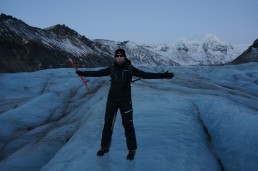
At the Glacier Lagoon of Jökulsárlón
When we asked our guide, Dana, about how many tourists had died here on the glaciers over the years, she told us about a few people she had rescued. After hearing her stories, I just have to say that some people really are crazy! Arrogance and overestimating your own skills can be a really deadly mix. When you’re in an environment which you’re not familiar with, you should be really careful and most important of all – don’t go alone! Instead, always go with a local guide!
We’ve now had a one days’ layover here at Hali Country Hotel and today we drove the short way to see the famous Jökusárlón glacier lagoon. They do zodiac boat tours on the lagoon but at the moment they are all canceled. At the time when we arrived at the lagoon, we also understood why. Jökulsárlón is now completely full of those big chunks of ice and little icebergs. There wouldn’t have been space for even a small zodiac boat to sail. The scenery at the lagoon is actually really surreal now. Below are some pictures that we took. Look for yourself.
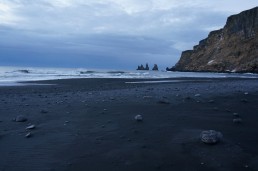
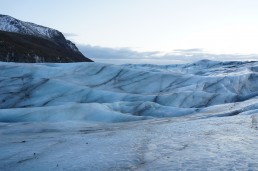
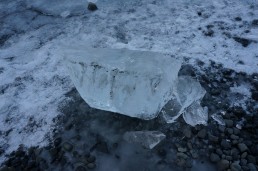
Continuing Up the Eastern Side of Iceland
From here we’re going to continue our winter Ring Road adventure all the way up the Eastern side of Iceland to the city called Seydisfjördur. It’s a port town on the lap of a fjord. At least that’s our original plan. But if something happens on the way or if we have to take a detour, etc., then we can also change our plans and spend the next night somewhere else instead. Hopefully, the luck will continue to be on our side, and the road conditions continue to be OK.
So keep your fingers crossed! Iceland truly is a magical place, and I hope that the next time that I’ll be writing, it’ll be from the northern Iceland. We have planned to spend the New Year in Akureyri. So stay in touch to read some more Road Posts from this Ring Road of Iceland adventure!
Travel Article Published in Digital Nomad Travel Magazine About Nepal!
I liked their style of writing and the fact that they had chosen mostly real travelers as the writers of the articles with their real, first-hand travel experiences “from the field”. In addition to that I also liked the visual presentation of the magazine, it felt somewhat fresh and functioning.
Downloading the Digital Nomad Travel Magazine’s Nepal issue
You can read this article of mine right down below. The Digital Nomad Travel Magazine is available for iOS at the store if you’re interested in subscribing.
This post was edited in June 2016.
Facing the Powers of Nature in Ollantaytambo - A Gateway to Machu Picchu
Nature holds the greatest power above all and bad weather can cause your plans to change in an instance. When weather-based delays happen, it’s all about how you cope with the situation and work your way out. We encountered some of these powers of nature in Ollantaytambo.
Getting to Ollantaytambo
On the morning of the 10th of February, we took a taxi from Puno to the airport of Juliaca, and we boarded a plane bound back to Cusco. From the airport, we grabbed a cab who took us the about 60 km journey to Ollantaytambo. We found a friendly taxi driver called Achilles (Yes, it was his real name!) with whom we negotiated a deal for the price of 110 Soles. We also made a deal with him that he’ll come to pick us, up back to Cusco after some days’ time. He didn’t speak much English so it’ll pay off to know at least a little bit of Spanish. On the way, we stopped by briefly at the village of Chinchero.
As a side note: the regional government of Cusco is planning to build an airport in this tiny, sleeping village! It should serve as a transportation hub for the growing number of tourists going to Machu Picchu. But if this will come true, it’ll be a disaster to the village, its residents, and their cultural and agricultural legacy, as well as for the environment! Not to mention of how poorly the whole plan is being administrated and planned. It may not come as a surprise to anyone that there is a long history of corruption inside the official governments in Peru and that has an effect on this kind of contracts. Here’s an excellent article about this project that I suggest you read. Included are corrupted officials from the regional government of Cusco, and there have also been connections even to the Shining Path, an old Maoist guerilla insurgent organization of Peru. That doesn’t sound good to anyone. Besides the new airport wouldn’t even be that necessary. It couldn’t serve great masses of tourists properly since being located at a quite high altitude. Cusco itself is at over 3300 meters above sea level and already flying directly over there from lower altitudes causes symptoms of AMS (Acute Mountain Sickness) to most of the people. Chinchero is 400 meters higher than Cusco. So you know what that means. It wouldn’t be practical or recommendable. But sadly it seems that the plan will come true sometime in the future. This is why I’d say that you should go to Machu Picchu as soon as possible! And you can see this place too before it’s going to be devastated.
Booking the Train Tickets to Machu Picchu
The town of Ollantaytambo is a charming little town “half way” to Machu Picchu. Some of the trains leaving from Cusco to Machu Picchu run via Ollantaytambo while others depart from there directly. Because of this Ollantaytambo is a favorite place to spend few days in before leaving to the legendary Inca capital. It’s already located in the Sacred Valley and from there it’s only about 45 km to Machu Picchu.
NOTE!! You have to reserve the train tickets to Machu Picchu preferably weeks beforehand! Otherwise, you can be left without a ticket. You can book and buy the tickets directly from the Peru Rails’ own website.
There are different kinds of trains but for example, the difference between the “Expedition” and “Vistadome” trains in practice is only the windows in the roof of the “Vistadome” carriages. So you’ll have a bit better views on the way, but the tickets are also pricier. But if you’ll depart with some of the first trains in the morning it’ll make no difference since it’ll still be dark outside.
Also, be careful when booking the tickets on the website. The site didn’t work flawlessly. It got stuck when we were trying to pay for the tickets and ended up charging our card twice (the other charge we had to cancel via our bank). Also, the arriving of the tickets to our email took really long! After almost two weeks I emailed them and asked for our tickets because they still hadn’t arrived. And only after that email of mine, they came on the day after. But without any apologies for the delay.
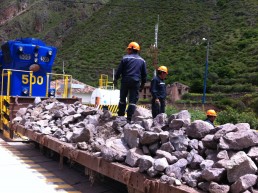
Weather Surprises and Hotel Disasters
We arrived at Ollantaytambo around noon and went directly to our hotel to check-in. We had booked a hotel which was located literally at the train station. There are many hotels in Ollantaytambo, but we had chosen this particular one because we were supposed to take the train to Machu Picchu early in the next morning.
But there was a surprise waiting for us at the hotel. The receptionist told us (only in Spanish) that there’d be no electricity or running water. We didn’t understand right away why, but after she had fetched an English speaking colleague, it dawned on us that there had been bad landslides and floods in the region during the last couple of days, and they had broken down some water pipes and electricity towers.
At that moment the whole town was out of power and clean, running water. However, there was hope that the electricity would be back later on the day but not the water. The hotel was intended to close down thoroughly, and they thought about cancelling all their bookings –which they only had a few besides us. Also, they didn’t actively offer to book us any replacement accommodation or to help us in any other way, either. When we told the staff that we didn’t have any alternative accommodations they agreed to stay open and provide us with a room for the night – but for a regular price!
This was beginning to be outrageous so we demanded to speak to the manager because the hotel should’ve provided at least some discount from its regular list prices. If a hotel doesn’t have any amenities available (like clean, running water and therefore f.ex. a flushing toilet) you can’t really charge full prices, can you?!
Only after some serious negotiation with the manager, he agreed to give us a room at half price. We got the only a few of jugs of clean water – barely enough to wash our hands and face. Because they said, they only had two spare tanks of fresh water. We had to buy bottled water for ourselves from the grocery stores. And still, the hotel kept its restaurant fully open in the evening, which was a bit odd, if they would’ve had only two tanks of fresh water for cooking.
I think it’d have been a better decision to give most of the clean water to the hotel guests than to the kitchen. But then again that was a decision of a greedy management not caring as much about happy hotel guests as about earning the maximum amount of money, despite the circumstances. That’s quite sad and bad management in the long run if you ask me. However, the hotel itself was nice looking and would’ve been comfortable if there’d been amenities available and professional management. But sometimes you just can’t have everything, can you?
Visiting the Inca ruins
After settling the hotel mess we went to stroll around the center of the town and ended up for lunch in a local, little restaurant. After eating a fairly good burger with homemade bun we went to visit the Inca ruins which are located a very short walk away from the center.
You can climb all the way to the top and roam on the narrow paths zigzagging on the side of the mountain. Be careful, though, especially when giving way to others on the narrow paths. Swaying from the edge could be deadly because there aren’t handrails anywhere. There were also some very heavy winds blowing all the time. Here is a short video I shot when climbing the hillside. You cannot really see the height from the footage but you can definitely hear the blowing wind!
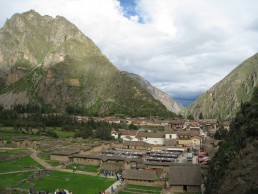
Conversations and Speculations About the Weather Conditions
You’ll need the Boleto Turístico to get into the site of the ruins, or you can buy a single entrance ticket from the booth. The single ticket is a bit pricey (70 Soles) compared to the Boleto Turístico (130 Soles), so I hope you have bought the Boleto Turístico in advance from Cusco.
We got to spend time pretty solemnly at the ruins until the official lunch hours were over. After lunch time it became much more crowded with tourists. Nevertheless, we spent many hours exploring there. When we left, we went to grab a cold beer in a café called “Heart’s Cafe.” This little cafe also was one of the few that had a free WiFi in town. At a table beside us were sitting an American family who repeatedly asked about the weather situations from the waiters because they were also planning to go to Machu Picchu tomorrow.
They were concerned whether the trains would be running or not. The servers said that they’d run, though. We heard these conversations and became a bit worried, but there was nothing else to do than just wait and hope that they will be running.
Because beer just doesn’t taste as good as it usually does in the high altitudes, we ended up having just one. We decided to go back to our hotel and to go early to bed because we’d have a really early wake up call tomorrow morning. We also had to pack up our day packs for one nights’ stay in Aguas Calientes because there’s a baggage limitation in the train. You cannot take a full loaded backpack weighing 25 kg (or more) with you.
The night was quiet despite the clanging of the rails until eleven o’clock. We woke up at 6 AM on the following morning and got pretty miserable breakfast at the El Alberque. We still ate it because we’d have a long day ahead and we checked out to the platform to wait for our train. But the train never arrived!
The first clerk we encountered on the platform told us that the trains wouldn’t run to Machu Picchu at all on that day, and he advised us to go and ask further information from the ticket office! We were devastated by this news – the Americans yesterday at the café had been right when suspecting that they wouldn’t run. We rushed straight to the ticket office of Peru Rail. At the booth, a clerk told us that the surface of the Urubamba river had risen too high because of the heavy rains that the water could rise to the train tracks.
Because of this raised water level, Peru Rail had decided that they wouldn’t transport any tourists to Machu Picchu on that day. Instead, they’d be just carrying people away so that they wouldn’t be stranded in Machu Picchu if the train tracks would go flooded and broke down. They also couldn’t say anything about would the trains run tomorrow.
I guess no one knew anything at that point because it totally depended on the weather conditions. So there still was some hope that they’d run tomorrow, and we still could see Machu Picchu, despite today’s drawback. As a backup plan, we did think about other possible route choices to go there and asked around about them from the locals.
But it turned out that there wasn’t many options available, especially this being the monsoon season when also many roads could be broken down and unpassable somewhere on the way. Therefore it would’ve been a bit too daring attempt to try to go there by land, and instead, we decided to stay in Ollantaytambo for an extra day and wait for tomorrows’ situation.
We changed our tickets for the first train leaving tomorrow morning – that’ll be 5.30 AM – and went for coca tea in the nearby café to think about how we’d spend this extra day we now had in our hands. It was a bit comforting, though, that there were lots of other, disappointed people at the ticket office changing their tickets, too.
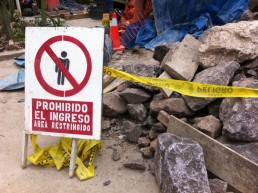
Finding Good Restaurants and Waiting in Ollantaytambo
We spent our day trying to book an alternative accommodation for ourselves, but every place was more expensive than the one we already had. And since it located literally at the train station, we ended up spending another night at the hotel El Alberque. This time, we got a worse room and just for 35% discount from the regular price, even though they still didn’t have any running, clean water.
But we took it because we would need to get up at 4.30 AM to be able to grab something to eat before – hopefully – departing to Machu Picchu. For lunch, we found the local restaurant which we had been looking for already yesterday, called ”Puka Rumi.” It was near the ruins after all. We chose homemade pasta, and the traditional “lomo saltado” dish and both of the portions were splendid! After dinner we enjoyed some Inca Colas on the patio, admiring the views to the mountain side.
The weather was so clear that we even saw two condors flying high above us. I recommend stopping by at Puka Rumi to have some good food when you’re in Ollantaytambo. Read some TripAdvisor reviews about Puka Rumi >>>
Most of the day we spent around Ollantaytambo, sitting at Cafés and writing our notes. There wasn’t much else to do anymore since we had already checked the ruins. For dinner, we looked for a restaurant for awhile and ended up at a pizza place called ”Inkaterra” near the Plaza de Armas. Inkaterra had a genuine stone oven where they baked all their pizzas. We ordered medium sized ones and ended up having the best pizzas in a long time with lots and lots of fillings.
After such a carbohydrate attack we just stumbled back to our hotel to get some much-needed sleep so we’d be able to wake up at 4.30 am in the morning. We just hoped that we’d be able to go visiting the legendary Machu Picchu tomorrow! After all, that’s the place for what we came to Peru for! So with sending a request to Pacha Mama for a modest weather for tomorrow and hoping for the best, we fell asleep.
Celebrating Virgen de la Candelaria Festival in Puno, Peru
The biggest festival of the year in Puno – Virgen de la Candelaria is at the beginning of February. It’s the time when dance performances, devils, and other strange creatures conquer the streets, accompanied by the music around the clock. It’s celebration time on the shores of Lake Titicaca.
The Biggest Festival of the Year – Virgen de la Candelaria
Puno isn’t particularly a beautiful town. Most of it is pretty ugly with its unfinished concrete buildings spotting the city scenery. In addition to this, it didn’t feel like the safest city I’ve been in though not the least safe, either.
What struck as a bit odd, though, was that outside of the main tourist street – Jr.Lima – there were mostly only locals hanging out on their business. And if you wandered further away, most of the time you were the only tourist around. This was actually quite fun but on the other hand a bit surprising, too. One day we went shopping at the local mall and big grocery store just a few blocks away from the main tourist area, and we saw only one other westerner on that whole shopping trip. This made us a bit more observant about our surroundings as we usually are (but not too much, though).
We happened to be in Puno at the beginning of February, and this is the time of the year when locals celebrate the biggest annual festival and celebrations in Peru: Virgen de la Candelaria. The majority of the tourists in Puno at this time have come mainly to see these parties but for us, it was just a nice coincidence. We had come because of the Lake Titicaca.
During this festival time – which lasts about few weeks altogether or sometimes even longer – there are lots of parades in the center as well as dancing and music performances all around the town. We were there during the highest period of the festivities, and there were performances about 24 hours in a day. On the other hand, this was quite fun because something was happening somewhere all the time. But then again, you couldn’t get much sleep during the nights because the music was thunderous almost the whole nights through. Our hotel was at the center of Puno, and the music was very audible in our room also at night. I was triumphal that I had my good earplugs with me! But some of the noise was audible even through the earplugs, but with those in my ears, I got at least some sleep.
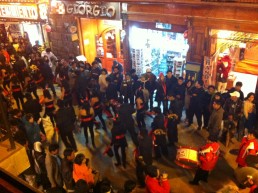
La Parada del Diablo – The Parade of the Devil
There are many parades included in the festivities, and there can even be several in a one days’ time. We saw one of the biggest parades on our last day in Puno. It was “the parade of the Devil” (La Paráda del Diablo). In this parade, the participants had the best masks and costumes with lots of Devils represented – as the name suggests!
Luckily we happened to be on the second floor of a restaurant during the best time of the show and were able to shoot the video from their window. If we’d be somewhere else, we couldn’t have seen as much. There were so many people watching the parade that the streets were totally clogged, and the noise was overpowering. During this kind of festivals, there is also always a greater risk of being mugged. Most of the locals were really drunk, and the crowd makes it easier for thieves to operate. So keep a closer eye on your valuables.
The Best Restaurants of Puno
The restaurant world of Puno didn’t offer many surprises. But there are a couple of good ones in the town which I can recommend. The first is called “Colors”, and it’s on Jr. Lima. We tested the place during the lunchtime offer. With 25 Soles (!) you got a salad, main course, and a drink. That’s a good deal. I got a (big!) Greek salad, Kashmir curry with chicken and an Inka Cola. And everything tasted great!
The second place was called “Mojsa” at the edge of Plaza de Armas. This restaurant had the 1st place in TripAdvisor during that time, so we just had to test it. The food turned out to be very similar quality, but I would’ve wanted more flavors in it.
The Jr. Lima street is full of restaurants but in the signs of unfortunately many of them, it’s said something like “Tourist Menu.” What could be more repellent than that? We didn’t go in any of them. A bit regrettably we didn’t try Cuy (guinea pig) either. Cuy portions are usually a bit pricey but here in Puno they were cheaper than anywhere else we saw. So if you’ll want to try it, try here.
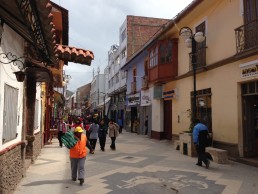
Buying Souvenirs from Peru
What comes to souvenirs in general, they are also much cheaper in Puno than for example in Cusco. Among other minor things, we bought three pairs of really soft and warm Alpaca slippers. Though just afterward we got to think about that hopefully the fur had come from already dead animals and not from animals slaughtered and raised because of their fur! In summary, Puno is an ugly looking town on the shores of Lake Titicaca, and if you don’t happen to be there during the Virgen de la Candelaria -festival, there’s not much to see.
The islands of the Lake Titicaca are the sights to see around here. But do venture further away from the most crowded tourist area of the center of Puno. Even though it’s not beautiful, you can experience some authentic, local day-to-day life going on around you without many other tourists in sight. Maybe you’ll also see a glimpse of another kind of Puno, which is more beautiful. Who knows?
Alternative Berlin: WWII bunkers, East Side Gallery, Spreepark and more.
Berlin is still the bohemian heart of Europe. A city which can offer something to almost everyone. But what kind of city is that Berlin which doesn’t offer tours to Checkpoint Charlie or to see the Brandenburg Gate?
That Berlin has to offer places like a Stasi museum, an abandoned amusement park from the DDR era, and underground bunkers from the WWII. There are lots of stories from the darker side of Berlin – a city with many faces.
Below the Surface in the Underground Bunkers From the WWII
Let’s start from the best site called “Berliner Unterwelten.” This is a company that takes you to the underground bunkers from the second World War.
The office of Berliner Unterwelten is easy to find, just take a metro to the station called “Gesundbrunnen.” Go out via the Southern Exit and you’ll see their office. You can’t buy tickets to their tours online. Instead, you’ll have to go and buy them from their office, starting at 10 o´clock in the morning. And if you really want to go on some particular tour, you will want to be there at 10 am sharp! Most of the tours will often sell out.
Prices are also moderate: about 10 euros/tour. We’ve been on the “Dark Worlds” –tour, and I can honestly recommend that! Every one of their tours is interesting, but the “Dark Worlds” is the one that will take you to see the WWII bunkers under the streets of Berlin. The tour starts from the Gesundbrunnen metro station.

Under the Streets of Berlin is a Bunker World
At one corner of the station, there is an old, green, iron door. On the other side of this door unfolds an amazing bunker labyrinth from the time of the WWII! The tour lasts about 90 minutes altogether and during this period you’ll see most of the insides of this bunker. It holds inside itself i.e. exhibitions of war era items and harsh, bare concrete chambers. When Berlin was under an air strike attacks during the WWII, the civilians came to seek cover into these bunkers.
But in reality, these bunkers were not safe at all. The safety was just an illusion created by the German government. These “bunkers” were actually so poorly built that they would have collapsed if just one air bomb would have hit them close enough. So they were death traps instead of bomb proof shelters.
There is an oppressive atmosphere almost everywhere in the bunkers, but somehow the most distressing feeling was at one of the bunkers’ toilets. Our guide told us that when the Soviet Union troops conquered Berlin at the end of the war, many German women decided to hang themselves in that bathroom rather than to leave themselves at the mercy of the Soviet troops. It was a disturbing fact to hear.
And besides these women, many other people had also died inside those walls. So lots of energies – good and bad – have been left inside the concrete walls. I think ghost hunters would have an attractive investigation grounds over there. When walking along those narrow hallways, you can feel a little glimpse of the reality of how it may have been like during the war. But of course, you really can’t imagine, not really, because you weren’t there and probably not even born yet.
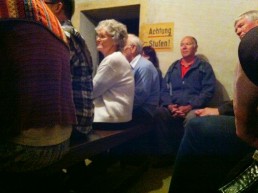
When our whole group fitted themselves to sit down in one, tiny bunker, on narrow, wooden benches and the steel jacket doors of the room were closed, someone with claustrophobia would have panicked. At the times of war, in this particular room, there had been twice as many people sitting around and waiting for the air strike to cease.
Sometimes they would have sat in complete darkness if the powers were cut off. There were candles on the walls, at three different levels starting from the floor level. Their purpose was to tell the amount of oxygen left in the room. There weren’t any oxygen holes anywhere in the room when the doors were closed; it was a completely sealed. So there was no additional oxygen from anywhere. The flame of the candle faded out on its level where there weren’t any oxygen left.
So, if the last candle at the floor level went off – then the people in the room were already really close to suffocating to death unless the bombings were going to cease and the doors would be opened again. People who locked the doors of the bunker went for cover elsewhere and so there weren’t necessarily anyone around to open the doors in time.
Our guides also told us many other fascinating stories during the tour, but I ain’t going to tell you those in here. You have to go to Berlin and hear them for yourself. Especially one of the guides was really professional, and she was able to tell stories that made you feel like they had been happening right there and then. This tour is something so alternative that you just shouldn’t miss it. This is also definitely something very different from an ordinary tourist attraction.
Spreepark – the Abandoned Amusement Park From the DDR Era
On the next day, you can take the S-Bahn and go to spend a day in one of the largest parks in East Berlin – the Treptower Park. On its eastern side is also located the abandoned amusement park built for the old DDr’s party members and their families. This amusement park is called the Spreepark.
Nowadays the park is open to public for visiting, so you don’t have to squeeze yourself in through the holes in the barbwire fence while trying to avoid the guards like you used to. However, outside the opening hours, the park is still said to be guarded by dogs and security officers. And I have to admit, that it was tempting – to try going in there at night.
It would’ve been an entirely different atmosphere in the dark when the dead clowns, rusty roller coasters, and skewed Ferris wheel would have created a haunting surroundings for your exploration. It could even be sensed during the daytime – a strange feeling of the days gone by hanging in the air.
When DDR collapsed, Spreepark was bought by private persons and during this private ownership, its story has got even wilder and strange. The park went bankrupt after a short while, and its owner tried to smuggle drugs inside the amusement park devices which had been sold to abroad. The owner was caught by the police. After this incident, the park was closed for a long time and was left to slowly rot away. Nowadays its owners have understood its value again and have begun to try to commercialize it again.
A couple of years ago (in 2012) there was a little train running through Spreepark. From the train, you could see the best parts of the park. It cost 2€/person. And you could even bring your own beer aboard! Sadly you’re not allowed to wander around the park independently, and the permitted areas are fenced and actually pretty small compared to the total size of the park.
If you still go behind the fences take care that nobody will see you going into the restricted areas! We went, of course. To take some pictures of the rotting items but when some guy who was part of the Parks’ “staff” noticed us, he drove us quickly away by shouting a lot in German and being pretty aggressive.
We pretended that we didn’t understand German, but that didn’t help a lot. But it’s still always quite fun to do something that’s prohibited, it gives you a bit of an adrenaline rush, and I absolutely love it!
UPDATE: We've sadly noticed that nowadays they’re even arranging bigger tours in Spreepark, and I guess it won’t feel quite as ”abandoned” anymore as it was back in 2012. It seems like the owners are commercializing this place really fast, so go see it now before it is totally ruined!
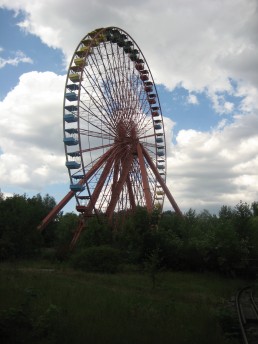
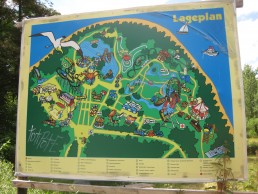
A Peek Into the World of the Secret Police of DDR in the Stasi Museum
The third great, but a different place to go to in Berlin is a fascinating look inside an organization which was the backbone of the deceased state called the DDR (East-Germany). This place is the Museum of STASI, the former secret police of the DDR, an equivalent to the KGB of Russia.
The museum is in a building complex which was the archives of the STASI. One of those square looking buildings contains hundreds of meters of files that the secret police gathered of DDR’s residents. A visit here is an eye-opening look into the near history of Germany. The archives opened a few years ago to the citizens of Germany so that they could ask for permission to go the archives and see if there were something recorded about them or their relatives. The opening of the Archives caused a rush.
You can reach the Stasi museum best by metro. Take the line U5 and stay off at Magdalenenstraße. Some of the best pieces of the exhibitions are the old spying equipment displayed. You’ll be amazed about what kinds of machines had been invented just for spying your own neighbor!
Stasi also took advantage of peoples’ natural sense of paranoia and curiosity by harnessing them very effectively for its own use. You can also visit the office of Erich Mielke (the famous head of STASI), left mostly in the state it was in when the DDR fell. The exhibition also offers a deep intoduction into the events that eventually destroyed Stasi as well as the whole state of DDR. The admission fee is just 5€ and probably there won’t be many other people so you can explore the exhibitions at your own pace.
A Decadent Photographer and the Legend of the Silver Screen
When we are speaking of the museums of Berlin; if you’re a photography enthusiast, your place to visit is the Museum of Helmut Newton. His foundation keeps this museum near the Zoologischer Garten’s subway station. Just take the Jebenstrasse exit and you’ll find the museum at the house number 2. Entrance fee is 10€ and the exhibitions change quite often. I personally adore his b/w –works of which can transmit some erotic and mystic charges onto the looker. His decadent pictures are photographic art in its very meaning, although many of them have also been banned at some times because of their erotic features. Check the current exhibition from their website and go and have a heartful of beautiful pictures.
BONUS TIP: Helmut Newton is buried in the same graveyard as Marlene Dietrich. Actually his grave is just a few graves from the final resting place of this legendary silver screen star. This graveyard is a tiny but cozy place called ”Städischer Friedhof III” and it’s in Friedenau. So if you like visiting famous graves, here you can see two on one visit!
East Side Gallery and the Best Flea Market in Berlin
You just have to see the famous Berlin Wall at some point, so go see it to the place where it’s at its best – the East Side Gallery. There are all the most famous murals – also the one with Brezhnev and Honecker kissing, among many others.
And for the last, but not least activity, if you’re in Berlin on Sunday, do not miss out the fantastic flea market in Mauerpark! It’s massive in size, and you can find just about anything you can imagine. If hunger and thirst are threatening to get you down while touring the market, you’ll find a big selection of food and drinks available. You can find almost anything from ethnic foods to organic goods. Accompanied by a cold, German beer, you’ll kill your hunger for sure!
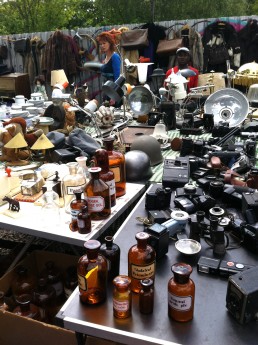
On the Floating Uros Islands of the Lake Titicaca
One of the most fascinating islands in the lake Titicaca are the famous floating islands made out of reed – the Uros islands. They are also perhaps the most visited of Titicaca’s islands, being so close to the mainland. The people living there has an interesting culture and traditions, but there are always pros and cons in the raising tourism industry.
The Legend Behind the Lake Titicaca
Puno is pretty ugly town overall, but there’s one reason why people come here, and it’s the convenient location at the shore of the great Lake Titicaca. According to the old Inca legend, the all-god Wiracocha rose from the Lake Titicaca to create the world and to tell the sun, the moon, and the stars to rise to the skies. Then he also created the first humans. This is why the Lake Titicaca is the birthplace of the Incas, and that is where their spirits return after they have died.
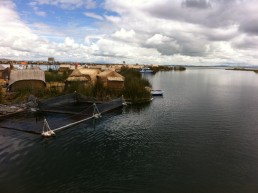
Choose a Responsible Tour Operator for Your Uros Islands Visit
Because Puno is located on the shore of Titicaca, it’s very easy to do some island hopping to the many islands of Titicaca. You can go for tours that’ll take several days and spend the nights on the islands, or you can take just day trips and stay the nights in Puno. Puno is full of tour companies so you will definitely find something that suits your schedule.
Just don’t fall into the “offers” of the predators attacking you when you arrive at the bus station! Though they will offer you very cheap tours, these are the worst kinds of the tour companies available! Low prices always come with the nasty side that the local island communities rarely benefit from the tourists’ visits at all. Instead, all the profits will stay with the tour company. So use some time and effort to examine and searching for the most responsible tour companies!
One of the good companies is called Edgar Adventures from which we bought our island tour. They have double prices compared to those offered to you at the bus station, but it’ll be worth it because you’ll know that at least some of your money will also go to the native island communities.
There are also other responsible companies. Just do a bit of searching around in Puno. Edgar Adventures had tours of various prices depending on the boat used on them. A whole day tour with the fastest boat (called ”speed motor boat”) for two islands of the Islas de Uros (the famous floating islands made of reed) and the island called Taquile located further away cost 55 USD/person. We ended up choosing this one.
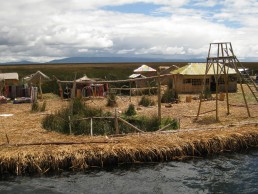
Visiting Uros Islands on an Organized Tour or Independently by Public Transport?
We would have wanted to go to visit the islands independently without an organized tour. We searched for information on how that could be done by asking the locals and surfing the internet but came to the conclusion that with our tight schedule that just wouldn’t be an option. It’d have taken more time than we had to spend.
There are ”Colectivo” –boats going back and forth on most of the islands but they are also quite slow. They also may not run every day and/or regularly. For example, a colectivo boat from Puno to Taquile takes 3,5 hours, one way, and it stops for only 30 minutes on Quechua, which is the main island of Islas de Uros.
So a return trip from Puno to Taquile would have taken 7 hours altogether. And this is just the traveling time by boat. Therefore there’s just no sense using them unless you have multiple days to spend. But if you do, you can take a colectivo boat first to Quechua and spend some time there and then move on to the other reed islands before catching the next colectivo from Quechua to Taquile. In this option, you’ll have to spend the night on Taquile, because you won’t be able to take a boat back to Puno on the same day anymore.
Unfortunately, we didn’t have enough time to go by the ”one island per day” –plan, which we would have preferred. So, this time, we had to take an organized tour instead. By our tour operator, the group sizes are kept small so it was a bit more bearable. However, on the same boat with us were also people from other tour companies, so it was a shared boat.
Fortunately those people left off on a different island at the Islas de Uros than we did. We can understand Spanish pretty OK, and all the other people in our group spoke very fluent Spanish. Our guide also spoke very fluent English so we preferred that he’d tell us the stories in English. This way it was also a nice practice for our Spanish; first listening to the Spanish version of the stories and seeing how much we actually understood, and afterward hearing the same story in English.
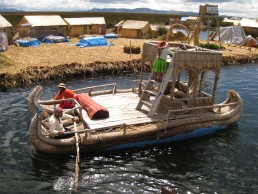
The Natives of the Uros Islands
The journey from Puno to the Islas de Uros was only about 15 minutes by the speed boat. On the way, we spent another fifteen minutes when the guides were negotiating with the Islanders on which particular island our boat was going to visit today. It seemed like it was finally decided by a very specific system. Our tour company was positively reputable by the fact that they always visit on a different island so that the income brought by the tourists would be spread as efficiently even with as many islands as possible. We ended up on an island called “Vinay Kollana.”
Islas de Uros are perhaps the most famous of Titicaca’s’ islands because of what they’re made of. They are made completely out of dried totora reed. These reed islands are also thoroughly man-made islands. Nowadays there are about 50 of them altogether when at the beginning there were only a few. The purpose of the island settlement was initially defensive; if a threat arose they could be moved somewhere else.
The people living on the floating islands are called the Uru (Uros) people, and they form three sub-tribes: Uru-Chipayas, Uru-Muratos, and Uru-Iruitos. The latter are located on the Bolivian side of Lake Titicaca.
The Highly Versatile Totora Reed and Its Different Uses
The totora reed grows in the lake and the dense roots that the plants develop and interweave, form a natural layer called khili. It’ll grow about 1-2 meters thick and that supports the islands. These ”lumps” are then anchored with ropes attached to sticks assembled into the bottom of the lake.
We were given a demonstration of how the construction is done by our islands’ Mayor. The bottom reeds also rot very quickly so new reed has to be regularly added on the top – at least every three months. It’s a funny feeling, walking on a reed island. Every time you take a step your foot sinks many centimeters into the reeds’ surface because it’s so flexible.
The Uros build their islands and houses of reed but also their diet and medicine include lots of it. For example, when a reed is pulled, the white bottom is often eaten for iodine, and this prevents goiters. We were also given a chance to eat the lower end of the reed, and it tasted somewhat acrid though fresh.
This white part of the reed is called chullo and like the Andean people of Peru rely on the coca leaf for relief from the harsh climate, hunger, etc., the Uros depend on the totora reed. It can also be wrapped around a place in pain to absorb it. And if it’s hot outside you can roll the white part in your hands and split it open, then put the reed on your forehead, and it feels very cool to the touch. And the white part can also be used to help ease hangovers caused by alcohol! You can also make reed flower tee. So it’s a very versatile plant indeed.
But even though the reed is a primary source of food, the Uros also graze cattle on the islets. We saw some small islets where cows were hanging out on it. And they have local domesticated animals like the Ibis bird for laying eggs for human consumption. Besides these foods produced by themselves, they also get supplies from the mainland from Puno.
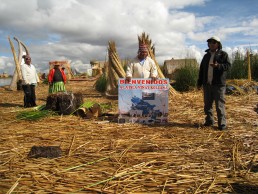
The Good and Bad Effects of Tourism on the Uros Islands and Lake Titicaca
After the building demonstration, our tour continued. We were all taken by some of the locals to see their house and to see the handicrafts they make. This is a point where you’re expected to buy at least something even though it’s not mandatory, of course. Then there was a ride on a ”Taxi” reed boat (but that’s not included in the tours’ price. It was an additional 20 Soles/person. A bit much, yes.).
And after the ride, you’ll visit the main island called Quechua. It’s the place where your accommodation will be if you want to spend a night, and there are also a couple of restaurants and souvenir shops. But frankly, it didn’t seem like a very appealing place to stay overnight, neither comfortable. Because naturally, it’s very moisture everywhere and the smell of mold is everywhere.
One of the downsides is that nowadays the islands are so infiltrated by tourists that it almost felt like ”a tourist show” and not that they’d be real people actually living there. Also, the Lonely Planet’s guidebook mentions that some of the Uros actually may live and sleep in the mainland and just come to the islands for the days to maintain the tourist business.
I guess some of this is true, but I also think that maybe the majority of the Uros actually do live on the islands all the time and live their traditional lifestyle. However, the more tourists there’s going to visit, the more their traditional lifestyle will start losing its authenticity. They’ll begin to live more and more by the rules of the tourist business. Which will be natural considering of how much of their livelihood will come from the tourism. A sad fact actually, if you think about it.
So I’d say that if you want to visit the Islas Flotantes de Uros, you should go as soon as possible. Then you may still have some feeling of authenticity. After all, it’s a very unique place to see and experience. And even though it might feel that they’re obtruding to you all kinds of souvenirs they make, I’d still suggest that you would buy something.
Firstly because you can be sure that that money of yours will at least stay with the Islanders, and secondly because the hand embroidered handicrafts that the Uro women do and sell to the tourists are actually gorgeous!
The woman from whom we bought our beautiful embroidered wall cloth resembling the Pacha Mama deity, told us that it takes almost three months(!) altogether to do the embroidering by hand. The stuff they sell isn’t actually cheap but for once it felt like you’re still not ripped off. Even if it’s not taking as long as three months, it will still take a long time to make something like that by hand. So at least I am happier to pay a bit more for something like that.
It’s a once in a lifetime experience to visit these famous floating islands. It’s also worth the journey if you just take the most of it despite the feelings of inauthenticity which you may occasionally feel.
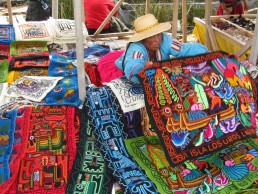
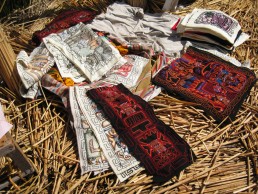
Traveling by Bus From Cusco to Puno in Peru
Traveling by bus from Cusco to Puno, on the shores of the magnificent Lake Titicaca is much more rewarding in Peru than just flying between these two cities. On the way, you’re also able to visit many interesting places from once one of the holiest shrines of the Inca empire to a tiny village museum.
Buying the Bus tickets and the First Stop in Andahuaylillas
Many bus companies are driving the route Cusco – Puno, but we chose the Inka Express because it seemed the best choice according to all the reviews. The route goes via the Wiracocha Pan Andino (“The route of the All-God”) -highway and the buses also make five stops on the way to see some exciting attractions, and you’ll also have lunch in one village on the way.
This of course makes it last longer, overall for about 10 hours but you will see quite a lot during the trip, and it’s always nice to stretch your legs from time to time. The buses leave at 7 AM from Cusco, and I strongly suggest to buy your ticket beforehand on the internet! You can buy them directly from their website. You’ll also save 10% off the price if you book online.
The first stop comes pretty quickly, about 30 minutes after departure in a village called Andahuaylillas. The attraction to see here is the Jesuit Church which is decorated with so much gold that you could buy a whole year’s worth of food to the entire village if you’d sell it.
It’s not allowed to take photographs inside the church, but if you don’t use flash and do it discreetly without the guide noticing, it’s possible – at least if you just use your phone. There are often vendors selling all kinds of stuff around the market square where the church is located, and actually, they can be more interesting to explore than the church. The stops of the bus are also pretty tightly scheduled so you have to prioritize what exactly you want to see!
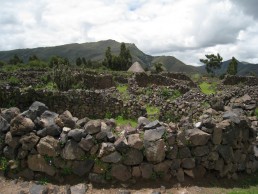
At the Holy Shrine of Wiracocha in Raqchi
The second stop is much more interesting. It’s the Wiracocha ruins of the village of Raqchi. One of the holiest shrines of the whole Inca Empire has once been in here. Today there are some quite impressive structures still standing. The area is also pretty big, and you could easily spend a long time just photographing.
Your guide will tell you shortly about the history of the shrine and afterwards you can explore around independently (or go with the group, if you like). Just take a notice of the time when you have to be back on the bus, though. We didn’t pay enough attention and the rest of our group ended up waiting for us for about 15 minutes. Our apologies were accepted, but our guide seemed not so happy.
Here are also some good vendors in the village and try to have at least little time to roam through them. Here would be a great place to buy some souvenirs because the starting prices are lower than in Cusco. However, how much you will end up paying, depends on your bargaining abilities. But you’ll get plenty of practice here, if you like.
From Raqchi there’s only a 20 minutes ride to the village called Sicuani where you will have your included lunch. This kind of buffet meals tends to be average or below in quality, but this one made a nice exception. There were many choices to choose from, and the selection also included some healthier choices like some excellent quinoa!
There were also different kinds of meat (including beef and alpaca), pasta, rice, salads, bread and a nice selection of desserts. Good value for the price. Drinks were not included, though. The lunch break is 45 minutes and after it, the journey will continue to the highest point of the route in the pass of Abra La Raya. It is located approx. 4335 m above sea level. There’s only a brief stop, barely enough to take a photo of yourself with the sign showing the altitude but then again there’s not much else to see.
Seeing Inca Mummies in the Little Village of Pucará
The fifth and last stop before Puno is in the village of Pucará. You’ll visit the tiny museum there but also the village with its narrow and empty streets, and traditional houses is an attraction in itself. It looks like hundreds of other villages in the Andes, but it has some strange kind of charm. It reminded me remotely of some of the communities I’ve seen in the Himalayas. In the museum itself, there’s not much else to see than the two Inca mummies, but they alone are worth the visit. Besides the mummies, the exhibition shows mainly some ancient tools of the Incas and other equipment.
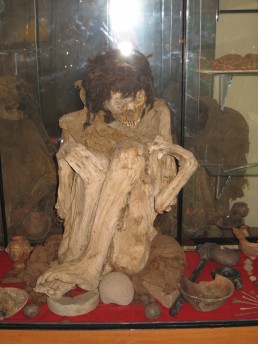
Driving Through the Concrete City andFfinally Reaching the Shore of Lake Titicaca
The scenery on the rest of the journey was quite dull and harsh. We also drove through the airport town of Juliaca, and it looked like a depressing, grey town from the East Germany with its unfinished buildings made of concrete and not much green anywhere.
The guide told us many non-flattering facts about Juliaca and also warned that it could potentially be quite dangerous to tourists. How dangerous exactly, remained unsure but it did not look like a cosy, neither a very welcoming place. The guide gave an image of a city that would be almost hostile towards tourists and when moving around you should be extremely careful.
There is also a lot of black market business in Juliaca. People are smuggling lots of goods from Bolivia’s side and then selling it in Juliaca. Therefore as well as the state and the town are losing a lot of tax income. Eventually, this will lead to a poor infrastructure and public health care, among other bad social impacts.
From Juliaca, you’ll continue your ride in a pretty dull landscape but then just before arriving in Puno you can see the great lake Titicaca on the left side of the road. That scenery was maybe the best one seen during the whole journey. The bus drives slower on this stretch so you can take some photographs from the bus window if you’re quick enough. Regrettably, the bus won’t actually stop here so that you could take some actual, good shots. But then again it has to arrive in Puno in a schedule.
Coca Tea and Death Rituals at the Inca Capital of Cusco
The Inca capital of Cusco has a lot to offer for visitors. Take a tour into the history of the Incas at Sacsaywaman and Q’enqo. Enjoy the great restaurants and food culture and try some new tastes. Admire the literally breathtaking views while sipping a cup of a traditional tea made of coca leaves.
Mild Symptoms of Acute Mountain Sickness (AMS) and Sipping Relieving Coca Tea
After traveling over 24 hours straight we arrived in Cusco in the afternoon. I was in a pretty bad shape after the worst descending of my entire life. During the last hours of our Trans-Atlantic flight, I caught a pretty bad migraine which made me feel really sick before landing in Cusco. It was a total nightmare. But I think I’ll always remember how ashamed I felt because I’ve never felt sick on any flight before – not even on a domestic flight in Nepal which can be really harsh! I also hope that I never have to experience the same again. Landing in the over 3300 m above sea level also didn’t much help my headache.
We bargained a taxi from the airport on a pretty fair price and arrived smoothly to our hotel near the Plaza de Armas, Unaytambo Boutique Hotel. We had the best room of the hotel, on the 2nd floor with a working fireplace, and after we had got our stuff settled the first thing was to get some much-needed sleep to recover from a headache and to adjust our bodies to the new altitude. Before going to sleep, we enjoyed our first cups of the original, recovering coca tea (from the original, dried coca leaves). At some places, the coca tea is made from Mate de Coca tea bags, but the real thing is made from the coca leaves!
We also drank an enormous amount of water. Hydration is crucial in high altitudes like this!
After “a little 5-hour nap”, the headache was gone. Instead, we experienced to be a little out of breath all the time, but that was to be expected. It wore off in a couple of days when our bodies adjusted to the new altitude. That proved to us though that all the warnings about the AMS (acute mountain sickness) were to be taken really seriously! After all, these were some of the mild symptoms of AMS. You have to know yourself well so that you can recognize if the symptoms go worse because then it can get really dangerous! For a cure, we drank more coca tea because it helped our bodies to acclimatize. The ancient Incas really did know what works best.
Getting Around in Cusco
Cusco is a compact place, and you’ll need a taxi only if you’re going somewhere further away from the town. You can walk to almost everywhere. When grabbing a cab, always negotiate the rate with the driver beforehand and always bargain for the price! You really don’t have to pay three times as much as the locals pay, but it’s up to your haggling skills.
My strong advice is that learn at least the numerals in Spanish – it’ll go a long way when bargaining! Also always use just the official taxis – they have a sign on the roof telling the name of the company and the telephone number. There are -of course- also ”black” taxis, but they might be a bit dangerous to use and why take unnecessary risks when you don’t have to?
However, Cusco is a safe place in general. The people are friendly, and the vendors aren’t as pushy as in many other places. Just saying ”No, thanks” once is usually enough and they’ll leave you alone. We never felt insecure in any way. Just use common sense when roaming around and you’ll be okay. Though when going to the ATM to withdraw some cash, it’s a good habit to be a bit more ”alert” than usual and just pay more attention to your surroundings. But that’s all.
Walking around Cusco is also a bit of training every time you go out. There’re so many stairs in the town which you’ll climb up and down many times a day. At the evening your calfs will know that you’ve done some serious high altitude climbing. And because Cusco is located in over 3300 m above the sea level, your lungs will have to work more efficiently, too.
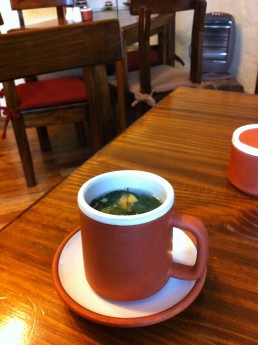
“Boleto Turístico” – The Bundle Ticket of Cusco
It’s recommendable to buy the ”Boleto Turístico” when you’re in Cusco (this is the “Cusco tourist ticket”) because you can buy it only from here. It costs 130 Soles (at the time of publishing this post), but you can access all the major sites in the nearby areas with this ticket. To some of them, there aren’t even tickets sold on the sites, so you gotta have this Boleto Turístico to enter.
You can buy it i.e. from : Oficina Ejecutiva del Comité, Av. Sol N° 103, (Open: Mon-Fri 8 am to 5:30 pm & Sat from 8:30 to 12:30) or OFEC Branch Office, Calle Garcilaso s/n (open: Mon-Sat 8 am to 5 pm & Sun 8 am to 8 pm). Also, many of the private travel agencies in Cusco sell it, but they can take some profit, so you could end up paying more than 130 Soles. Check some additional info from the official pages of the Peruvian government.
Also, note that the entrance to the Qorikancha Santo Domingo is not included in the boleto turístico. It’s an additional entrance fee of 10 Soles to go in there. Qorikancha Santo Domingo has been built onto the old Inca ruins and inside you can still see some of these old, Inca walls and constructions which have been preserved. Then again a part of these walls can also be seen on the outside of the church itself, so it’s not mandatory to go inside.
Included in the boleto turístico is a little bit bizarre museum which is also a bit tricky to find. It’s the Museo de Sitio del Qorikancha. It’s located on the Avenue del Sol, but it’s hidden below the street level.
It’s tiny and smells of mold but why you should go there is that there are three Royal Inca mummies included in the exhibition. And they were actually the best mummies we saw during our whole stay in Peru! So don’t miss them out!
Inca Ruins and Day Trips Around Cusco
When you’re in Cusco, don’t forget to make day trips and visit the many sights outside the downtown area. We visited the Inca ruins of Sacsaywaman and Q’enqo on separate days, but they’re located very near each other so you can visit both of them on the same day if you want. They are very different kind of Inca ruins with a different atmosphere so I’d recommend going on separate days so that you’ll have enough time to explore both without hurry.
Of these places, Q’enqo is the most interesting one. It’s a place where the Incas held various kinds of death rituals and some legends tell that they even sacrificed humans in Q’enqo. The altar in the picture below was one of the most sacred and exciting places in the caves. The Quechuan language name ”Q’enqo” means a labyrinth or a zigzag. And there really is a carved track zigzagging down in the stone. What has been flown down the track in the ancient times – holy water, chica, or blood – remains a mystery. Even the archaeologists haven’t been able to tell.
The temple of Q’enqo is dedicated to Pacha Mama (Mother Earth) which is one of the strongest and holiest deities in Peru and present even in the hustle of the modern day life of the local people. Q’enqo have once been a particularly holy place for the Incas. And maybe because of this, there was this very peculiar atmosphere hanging in the air.
Sacsaywaman, on the other hand, is a bigger Inca ruin and visited by many tourists. In Sacsaywaman there remain many brilliantly built structures of the Incas. You cannot but admire their architecture and engineering work. Still, there aren’t as interesting things to see as there is in Q’enqo, neither is the history of the place as interesting. But nevertheless do not miss to see Sacsaywaman, either.
Other possible day trips from Cusco includes a trip to Pisac with its famous marketplace and ruins. The busiest market day there is Sunday (with lots of other tourists, too) but nowadays there are markets also held on Tuesdays and Thursdays. If you’d like to visit a marketplace less crowded by other tourists, then go to Chincero. We stopped by over there on our driving journey from Cusco to Ollantaytambo. It is a very nice, little place.
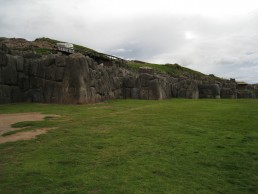
Getting From Cusco to Puno
From Cusco, we continued our Peruvian tour by a bus to Puno and towards the world’s highest located lake, Titicaca. Many bus companies are driving the route, but we had booked tickets to the Inka Express. This was the best company at the time of writing this post with the greatest reviews and also with the best-conditioned busses.
The journey will take about 10 hours so having a comfortable seat will pay itself back. You can also take a domestic flight from Cusco to Puno, but I recommend taking the bus instead. Puno is located in ~ 3830 m above sea level (~ 470 m higher than Cusco) and ascending several hundred meters too quickly can be bad for you. Also, the bus stops in many beautiful places on the way, and you’ll see much more during the trip than you would by flying.
A TIP FOR THE ROAD: Even though there’s said on the Inka Express’ website that water and coca tea are included in the price, in reality, there’s only one(!) little bottle of water provided and coca tea is from tea bags (not from original leaves)! So buy at least enough water to take with you! Also buying some snacks and nuts from a grocery store isn’t a bad idea!
Stuck in Ollantaytambo on Weather's Mercy
Sometimes everything doesn’t go according to plan. What do you do then? You adapt.
Whether Tricks on Us in Ollantaytambo, Peru
We were supposed to go to Machu Picchu today, by a train from Ollantaytambo via Aguas Calientes. But when we got to the train station in the morning there was a surprise waiting for us. Not a single train would run today to Aguas Calientes! Because of the rains the surface of the river Urubamba had risen to such a high level that it threatens to rise to the railroad already. As a result Peru Rail will only transport tourists away from Aguas Calientes and as a precaution, they do not allow any trains to go there. So here we are in Sacred Valley, so close to Machu Picchu, but yet so far.
We changed our train tickets for the first train leaving for tomorrow morning even though nobody at the office of Peru Rail knew would the trains run tomorrow. So here we are stuck in Ollantaytambo for an extra day, and there’s nothing we can do except wait. And hope hard that we’ll be able to go tomorrow. Because on the day after tomorrow, we have to go back to Cusco to catch our flight back home.
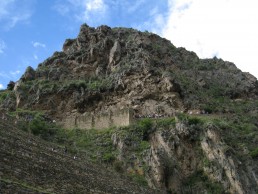
New Travel Plans to Machu Picchu
We ran into an officer of the train company on our way back to town who told us that the trains would probably run tomorrow. She also told that today’s cancellations were just a precaution because of the high level of the river the traveling of the train would be dangerous. This news gave us hope. But what will happen, remains to be seen in the morning.
There have been some heavy rains and landslides in the region on the last couple of days. When we arrived yesterday, there wasn’t even electricity in the whole town because of the power lines had been cut by some landslides. Now there’s at least electricity but for example still no running water in our hotel. Yesterday we had our hotel at half price because of this but today we got only -35% discount (even though nothing had changed in the conditions).
I think we made the right decision to stay and see all the cards until the end. Let’s just hope that we’ll have some luck on our side. We also asked around a bit at the town square would there be any other alternative route to Machu Picchu besides the railway. We got to know that there IS at least one other way by land, but now in the monsoon season, the road will probably be impassable. So it’d be highly risky to try by that way, and therefore we discarded that plan and decided to wait for tomorrow’s train.
We now have an extra day to spend here in Ollantaytambo. We already went to see the Inca ruins yesterday and besides those, there’s not much else to see. The ruins and terraces were great, though! Very narrow paths on the hills of the mountain and unfinished buildings. The ruins were a bit crowded even though we went pretty late in the afternoon. So the photographing was a bit challenging task, but we still managed to get some pretty nice shots. Here are some of them for you to see meanwhile we stay here. Tomorrow morning we’re hoping to leave Ollantaytambo behind us and continue our journey!
The Bone Church of Kutná Hora and a Traditional Czech Marionette Theather
Despite its pretty morbid nature, one of the most famous sights of the Czech Republic is the Sedlec Ossuary, also known as the “Bone Church.” It’s a little church of which interior is made mostly of human bones. It’s also just a short train ride away from Prague.
Art Made of Human Bones in the Historic Unesco City of Kutná Hora
There’s a fascinating town in the Czech Republic, about 70 km away from Prague. It’s called Kutná Hora. Its historic city center is on the list of the Unesco World Heritage sites, but the town holds something even more interesting.
There is the famous “Church of Bones” – the Sedlec Ossuary. I had always wanted to visit there, and when I suddenly had the opportunity I immediately took advantage and went to see it. It’s only an hours’ train journey away from Prague, and the train tickets aren’t expensive.
It’s also a great day trip to take from Prague because you can take a morning train and check the church and the historic city center during the day and be back in Prague to have a dinner or a bar hopping in the evening.
You can walk from the train station to the Sedlec Ossuary; it’s not more than 20-30 mins walk, and there are relatively good signs, so you cannot get lost. But if the weather is bad then I recommend taking a taxi.
The Sedlec Ossuary was just as macabre and beautiful in a sinister way than I had expected, only smaller than I had thought it to be. The whole interior of the church is made from human bones. The walls are covered with bones, and there are crescents, chalices, statues and maybe the most famous of the artifacts – a big chandelier. You can make almost anything out of human bones if you just know how to put them together. It takes a lot of imagination but the possibilities are truly endless.
The History of the Sedlec Ossuary of Kutná Hora
In the 1600s a huge number of people died from the plague and the cemeteries were filling rapidly. Despite the lack of burial grounds the bones of the deceased had to be gathered somewhere and they started piling the bones into this little church.
The bones are reconstructed into the artifacts that they’re representing now as late as in 1870, but you can still feel the plague infected history when you step into the church. The smell of mold, earth, and bones hang in the air all over the place. It’s so powerfully present that you just cannot but remember the old motto of the Middle Ages: “Memento Mori” (“Remember that you die”).
We happened to be at the Sedlec Ossuary at a time of day when there weren’t many other people on the site. This was a tremendous advantage because I could take much better photographs of the interior of the church and of the old and a bit creepy cemetery outside.
The bone church is so small that if there happen to be a couple of busloads of tourists inside, the place is so crowded that you’ll have difficulties to even see it thoroughly. So try to go early in the morning or late in the evening to avoid the worst of crowds.
You won’t need much time to see the bone church, though, because it’s small but reserve at least 2-3 hours for it. On the road to the church, there are a couple souvenir shops and at least back in 2009 they were selling some pretty sweet stuff: hand-painted skulls, etc. But I don’t know what it’s like today, have they turned out to sell the usual, kitschy stuff that most traditional souvenir shops tend to offer.
After checking the shops you can walk to the center of Kutná Hora to have a pint of some good, traditional Czech craft beer while watching the Unesco World Heritage –listed city center. If you want to grab something to eat I recommend wandering more off from the center square, to avoid the tourist prices and crap food. Further away I’m sure you can find some good and cheap local restaurants.
See a Traditional, Czech Marionette Theater Show
After you’ve taken a train back to Prague, you’ll still have time to go to see a classic Czech marionette show. There are centuries of tradition of Marionette Theather in the Czech Republic and that’s something not to miss out while you’re in the country!
It’s good to remember that these shows are mainly for adults, though. We stopped by to see the Marionette version of the opera “Don Giovanni” by W.A.Mozart in the National Marionette Theather. You can find the ticket prices, reservations, showtimes and everything else from their website.
The tickets can be a bit pricey but if you’ll show up at the theater just before the show is starting and it isn’t fully booked, you may have the tickets at half price. That’s what happened to us when we showed up about 5 mins before the start of the show. Of course, there’s always a chance that you can’t get in if it is sold out, but then you can try on another evening. There are many shows daily, and the theater is located in the very center of the city in Staré Město.
You can also buy wooden marionette puppets from many places in Prague but be prepared to pay a fair amount of money of these splendid creations of handicraft.
In the onsens of Beppu in Japan
Beppu has some of the best natural onsens of Japan. Because of the onsens, it has also been the capital of wild nightlife already for centuries. Today you can still find great onsens from the middle of lush nature and a sex museum you just can’t miss.
Beppu is perhaps best reached by train. We took a train from Fukuoka. All of the trains in Japan are also not Shinkansens, so reserve enough time for the journey.
Traditional Ryokans and Odd Japanese Customs in Beppu
I still remember how strange it felt when always when any one of the train’s staff either entered or left the carriage, they turned around and bowed to the passengers. I knew that bowing is an old cultural custom and that Japanese people are very courteous in general. But nevertheless, it felt odd to us westerners.
More traditions were waiting for us when we checked into our accommodation in Beppu, a ryokan called Nogami Honkan (1-12-1. Kitahama, Beppu). Ryokans are traditional Japanese guest houses which have tatami floors and other typical furniture, and they have a whole different atmosphere than in ordinary hotels. I recommend staying in a ryokan at least once on your trip to Japan. Otherwise, you’ll miss out something from the feeling of the old times, that they perfectly represent.
In our ryokan there was also a nice bonus – there were three onsens which you could book for private use. We immediately booked the best looking and biggest onsen for our first evening. Lying in a hot onsen is one of the most relaxing experiences I’ve ever had. Just remember to come and cool off regularly or you can get dizzy.
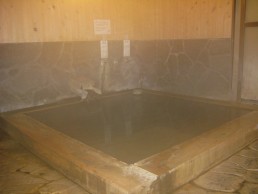
Bath in Some of the Best Onsens of Japan
Onsens, the iconic hot springs of Japan, are mineral-rich pools of water which are said to contain healing qualities. At least soaking yourself in them is incredibly relaxing, especially for aching muscles.
Beppu is particularly famous from its onsens, and it’s Japan’s most famous hot springs/onsen resort area. There are lots of onsens in the surrounding nature. Also, the best onsens are just those natural ones which are located in the wild and not purposefully built.
There are also the “Beppu Hells” (地獄 Jigoku in Japanese), multicolored volcanic pits of boiling water. These pools are too hot to be diluted into onsen and often have an unyielding smell of sulfur. Many of the Hells and onsens are in the Kannawa area. Stop by at The Foreign Tourist Information Office in the center of Beppu for some more information about the locations and on how to get there. Tourist Information has three branches around the city center.
How to Get to the Onsens
To get to many of the onsens, you’ll have to rent a scooter or a car and drive to them. Because we don’t have drivers’ licenses, we took the local bus to the nearest onsen we could reach. There was a short walk from the bus stop, but the route was an attraction itself. For example, after walking a while, we passed a graveyard where we took some eerie photographs. And after about 30-45 minutes walk we came to the onsen.
Getting lost on the way is almost impossible because your nose will lead the way from far away – you will smell the sulfur in the air, coming from the onsen.
The Onsen Etiquette
On the spot, there’s usually only a small wooden shack where people will change their clothes (it’s a unisex shed). Most of the times there will also be other people, mainly locals, having a bath. Even though nowadays a bathing suit is almost always required, occasionally people can still be naked when they bathe in the onsens. So try not to be distracted and just enjoy the experience. However, I must say that I’m a firm supporter of bathing suits.
The water in the onsens is usually almost scorching so don’t stay in for extended periods of time. Your body temperature will rise quickly when in such hot water, and it can also be dangerous if you stay too long.
Just stay in for about 5-10 mins at a time and then get out to cool off for awhile before dipping yourself in again. We noticed that Japanese men keep a towel on their head which has been drenched in cold water. This helps in cooling your body off.
Remember also to remove all your metal jewelry before dipping yourself in the onsens. Because if you don’t, the minerals of the water will corrode them and turn them into a greenish black. If you forget them on, your jewelry won’t be ruined forever, but you’ll have some hard time cleaning them.
A tip for the cleaning: just take an old toothbrush and brush them vigorously with toothpaste. After awhile your jewelry will be all shiny again!
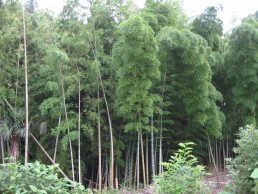
Hihōkan Sex Museum
Hours: 9 am – 10 pm
Address: 338-3 Shibuyu Kannawa
Beppu City, Oita Prefecture
Tel: 0977-66-8790 (local number)
NOTE: I'm not 100% sure are the
above opening hours still valid, so check them out somewhere before you go!
Beppu’s Vivid Nightlife
Beppu is a pretty small town, but it’s full of bars. There are also regular bars, but most of the places look like private clubs and hostess/host bars. Also, the nightlife of Beppu is still rumored to be pretty wild. It seemed that people come here to drink heavily and then on the day after they go to the onsens to cure their hangovers.
There is also a big Rehabilitation Center in Beppu. We came across it while we were hiking to the onsens. I think that it won’t have a lack of customers.
You can easily spend a few days in Beppu without getting bored. And if you’d like to party a bit, this is the place to be. We chose not to go bar hopping, but if you have some time to spare, give the famous nightlife of Beppu a chance. Just keep an eye on your money as I think you could easily spend a fortune in one night.
Or just take your visit as an extremely relaxation, like we did. Either way, you won’t be disappointed.
Exploring Around Okinawa
Okinawa is an island of stories. Its history starts from the days of the feudal lords, and it’s a place where you can find many peculiar and original things. The indoor markets sell venomous snakes in sake bottles. There are great beaches. And a Ryukyuan castle which is a Unesco World Heritage site. And this is just the beginning.
A Ryukyuan Castle from Feudal Japan and How to Take a Bus There
We had come to Okinawa for its beaches and laid back atmosphere, so we were going to explore the island as much as we could.
First, we went to see the best sight-seeing place of the whole Okinawa, Nakijin-jo – a Unesco World Heritage Site. It is an old Ryukyuan fortress dating back to the 14th century to the time of Shoguns and Samurais.
It is a magnificent place full of feudal history so if you ever go to Okinawa be sure to pay a visit over there!
Nakijin-jo is quite easily reachable by the local busses number 65 or 66. They run around the island, in both ways. When you’re riding the bus, keep a close eye for the sign of the Najikin-jo! There’s a little walk from the bus stop, but if you just tell the driver that you want to go to Nakijin-Jo, they’ll tell you where to get off.
When you enter a bus, just grab a ticket from the machine beside the driver, and there is an electronic display at the front of the bus that has numbers and a corresponding fare that increases as the bus makes its way along its route.
When getting off, match the number on your ticket to the number on the display. The fare next to that number is what you have to pay for the bus ride. Drop your ticket and the exact fare – yen only – in the fare box. There is a change dispenser at the front of the bus that gives change for 1,000 yen bills, 500 yen coins, and 100 yen coins. The system can be a bit tricky at first but you’ll get used to it soon enough. You can find the bus maps, schedules and additional information here.
The Best Restaurants of Okinawa
The restaurant scene in Okinawa is not that big, and most of the places are in the center of Naha, the capital city. The only restaurant near our hotel was the hotel’s own. Other restaurants were all a bus or a taxi ride away. So we ended up eating a couple of times at the Lue’s Beach Resort where we lived, but it was a bit of disappointment on both times. So I’d recommend driving or taking a bus to Naha for a dinner unless your hotel has a superb restaurant.
There are some nice restaurants in Naha, even though they’re not great in numbers. The best one we visited was a buffet style, Korean barbecue restaurant called Bambohe. Their deal was ”All you can eat in 1,5 hrs”, counting from when you arrive. They had cheap beer, fantastic selection of meats, fish, sushi, desserts, etc. And because it was a Korean barbecue you could grill your meat at the grill inserted into your table. It’s worth the very reasonable price and therefore very recommendable! We ended up eating more than we could take but we were nevertheless euphoric when leaving the place!
EDIT: I’m not sure does this restaurant still exist in Naha, as it was at the time of writing this, but if it is, do let us know.
We also found a burger place a little bus ride away from our hotel at a location from where you can watch the waves crashing on the shore while you’re eating your dinner. The burgers we got were minuscule, though good. We wouldn’t have believed that those were the menu’s biggest options!
Sometimes it was also a bit annoying in Okinawa when you were ordering a pint of beer and as a woman, and you always got the half pint – if you didn’t exactly say that you want the whole pint. Also in this burger place, we got some amazed looks from the (male) waiters when we ordered the big (read: normal sized) pints. But we passed it by saying that we’re Finnish.
Sake Spiced With Venomous Habu Snakes and the Indoor Markets of Naha
In Naha, there are also indoor markets and the biggest one of them is a fun place to explore around. Everything is written just mostly in Japanese, so most of the time you can only guess what the things are. But I suppose it’s part of the thrill. Just have some courage and try something out.
We tasted some suspicious looking ”lumps” from some aunties’ vendor, and they tasted exquisite. Unfortunately, I don’t remember anymore what exactly their exact taste. One sign at the seller said walnut, though. We also bought slightly frozen pineapple slices sold in sticks, and they were very fresh and delicious.
One peculiarity of Okinawa is the Habushu sold in bottles at the markets. Habushu is a type of sake that has some venomous Habu snakes in the bottle with the alcohol, and it’s made almost exclusively in Okinawa.
Local officials say the magic of Habushu comes from the mixture of habu venom and the particular type of alcohol. I say that it’s just a bit crazy, but it adds the sales of the sake for sure. Habushu is also expensive; even the cheapest bottles can cost around 8000 Yens (80 USD). And the bottles with even more impressive Habus inside can cost hundreds of dollars. I find this tradition questionable because the Habu snakes are hunted in large numbers because of it.
Some Military History of Okinawa and Water Sports
Lastly, a couple of words about the military side of Okinawa. There are still some Americans and their military bases in Okinawa because it’s still a strategic place for the US. So maybe that’s one reason why people in Naha speak more fluent English than Japanese on the mainland. There are also some ex-military sightseeing places in Okinawa. So if you’re interested in sights like that and want to see some old bunkers and stuff, just search the internet a bit, and you’ll find plenty of things to see. We rather chose to spend time relaxing at our beach than venturing to see old army bases and such.
But there are lots of things to do on Okinawa. One specialty is water sports. You can go diving or water skiing, just to mention a few options.
Unfortunately, the waters on Okinawa are so muddy that snorkeling isn’t a good idea, the visibility being close to nothing.
But you can also just sit on a beach, sip a cold beer, and just watch the fabulous sunsets, for example. Enjoy the relaxed island atmosphere like the many Japanese people who come to Okinawa to spend their vacations year after year.
Searching for the Alternative Tokyo
Venturing in Shibuya, Kabukicho, Shinjuku, and other parts of Tokyo which are known for their subcultures less covered by the guidebooks, is an adventure in itself. It was an entirely different world from our own culture and immensely interesting.
Getting Lost in the Streets of Tokyo
I remember how our first days in Tokyo were spent mostly by taking a lot of pictures and just wandering around in awe. Getting lost while walking around a city is sometimes just fun, but Tokyo does have one big inconvenience, and that is the hardship of finding particular addresses.
Most of the streets have no names, and if they do, they don’t have any signs with the names written down – not even in Japanese. Even if the locals want to find some particular place they draw little maps for each other, for example in the napkins.
That isn’t quite traveler-friendly, so be prepared to get lost all the time! Like said before, sometimes getting lost doesn’t mind that much when there’s something to see almost all the time. But if you’d really want to find some particular place, there’s a good chance that you will not find it – which may sometimes be really frustrating.
Shibuya – Love Hotels, Strip Clubs, and Sex Shops
Shibuya is one of the most exciting neighborhoods of Tokyo. And I admit that maybe most of all we wanted to see the famous Love Hotel area (or the so-called “Love Hotel Hill”), which turned out to be a lot more shabby and scruffy than we had expected.
It sure didn’t seem, neither felt like you would start to want anything – the last thing in your mind being sex. We just had expected more from these famous Japanese Love Hotels, so we felt a bit disappointed. They also appeared to be pretty expensive, especially those which looked at least a little bit more “upper class”. In summary, you can’t find love hotels romantic in any way, no matter how hard you’d try.
There were also various kinds of striptease caves everywhere, and I mean literally everywhere. We caught many white-collar working men coming out from them in the afternoon. It came to my mind that while others go for an after work drink, it seemed that many Japanese men went for an after work striptease.
Out of curiosity we also visited some sex shops of the area, and there were lots of them. That was actually a lot of fun since there were plenty of “interesting” stuff sold. You know, let’s just say that Japan hasn’t got its reputation as one of the kinkiest nations for nothing. While you’re in Japan, getting to know something about the sex culture just is a must. And if you want something very particular, this is the place where you will find it. If you won’t, it probably doesn’t exist at all.
Recommended (Gay) Bars in Tokyo
Despite the hardness of navigating in Tokyo, we did find some places we had checked out beforehand. So here are some of our two top picks from that pack.
In Shinjuku Ni-chome there are lots of gay bars, and it’s the ”official” gay area of Tokyo. One nice bar, where we had quite a many beers (because it was Happy Hour) was called The Advocates. Browse their website to find the location. The Advocates is very tiny and as I can remember we were the only women present. But that wasn’t an inconvenience at all – on the contrary. While some gay bars don’t want women as customers, in here we felt warmly welcomed.
One other bar which we stopped at was a lot harder to find because it was on the 3rd floor of some ordinary looking apartment building, with only a tiny sign high in the wall of the building. That was a women’s bar called Kinswomyn. That bar, unfortunately, wasn’t really worth the search, and we preferred the Advocates more.
Sushi Bars and Izakayas for Quick Snacks in Tokyo
It was also surprisingly difficult to find some good places to eat in, even though Tokyo is full of restaurants. The majority of the restaurants are those almost dirt-cheap, local eateries called izakayas where you just can’t get any decent meat (most of the food being just bones and stuff).
Then there are those really expensive restaurants – even for us Finnish who are used to the fact that eating out may cost a small fortune. And we even didn’t travel with a tight budget. However,t we always found something nice to eat in the end, even though I don’t like fish. And in Japan fish is plentiful.
We also tried some traditional sushi for many times. The sushi sold in the restaurants was very different from what we are used to at home, it tasted much more “fishy”. I wasn’t particularly fascinated by it, but if you like to eat fish, you’ll love the sushi in Japan.
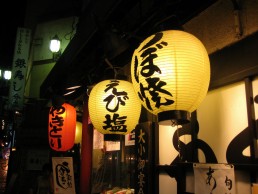
Kabukicho – Japan’s Largest Red Light District
Japan’s largest Red Light District called Kabukicho is also in Shinjuku. It’s just without the official prostitutes (yes, at least without the “official”) hanging around the corners. But it certainly is an interesting area full of bars and hostess clubs. It’s also a place where people come to party and go bar-hopping.
But bear in mind that Kabukicho is an expensive place to have a night out, at least if you find yourself venturing into the host and/or hostess clubs. Be prepared with lots of hard cash because a lot of the places won’t accept credit cards and if you can’t settle your bill you can get into trouble. Some – or perhaps quite many – of the clubs are still rumored to be run by the Yakuza, Japan’s notorious mafia. So, you wouldn’t want any trouble, would you? But despite this, it’s still a safe place to hang out and have a look of the raw vibe that Kabukicho has.
Kabukicho is also a fun place just to hang out, to walk criss-cross along the streets of this neon hell and occasionally stop by at some ordinary bars for a drink or two. That won’t break your budget, and you can have an excellent time.
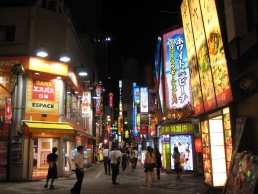
Tokyo’s Metro Offers an Easy Transportation
The best way to move around in Tokyo is the metro. It runs smoothly and if you just try to avoid the worst rush hours of the day it’s even fun to ride with.
But even in the worst of a rush, the Japanese people are so disciplined that everyone just stands in the lines waiting, and no one tries to go before you. Instead, everyone goes in with their own turn, a thing which you rarely see. In other countries, most of the time people are just rushing in all at once in a terrible hurry, squashing each other on the way.
Taxis are a bit expensive and if you don’t know exactly where you’re going – if you don’t have a really specific address – the good chances are that even the driver doesn’t necessarily know. So it may be better to avoid taxis.
The Sensory Overload
Tokyo can also be very tiring and consuming. It’s pouring an overload of information on you from every direction, 24/7. All that information consumes a lot of you and demands a lot of your attention. I think that you will either love it or hate it. I did both, depending on my current mood.
Tokyo is a real megapolis, and it can have something for everyone. But you could survive its urban labyrinth better if you prepare to get lost and don’t get annoyed if you won’t find what you were looking for. Maybe next time, then.


